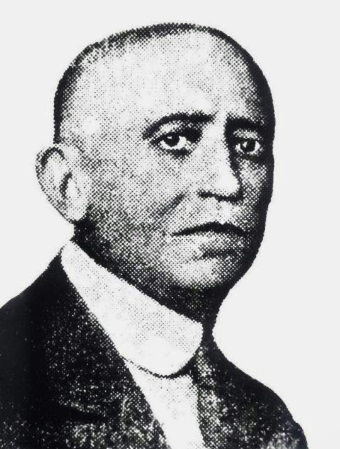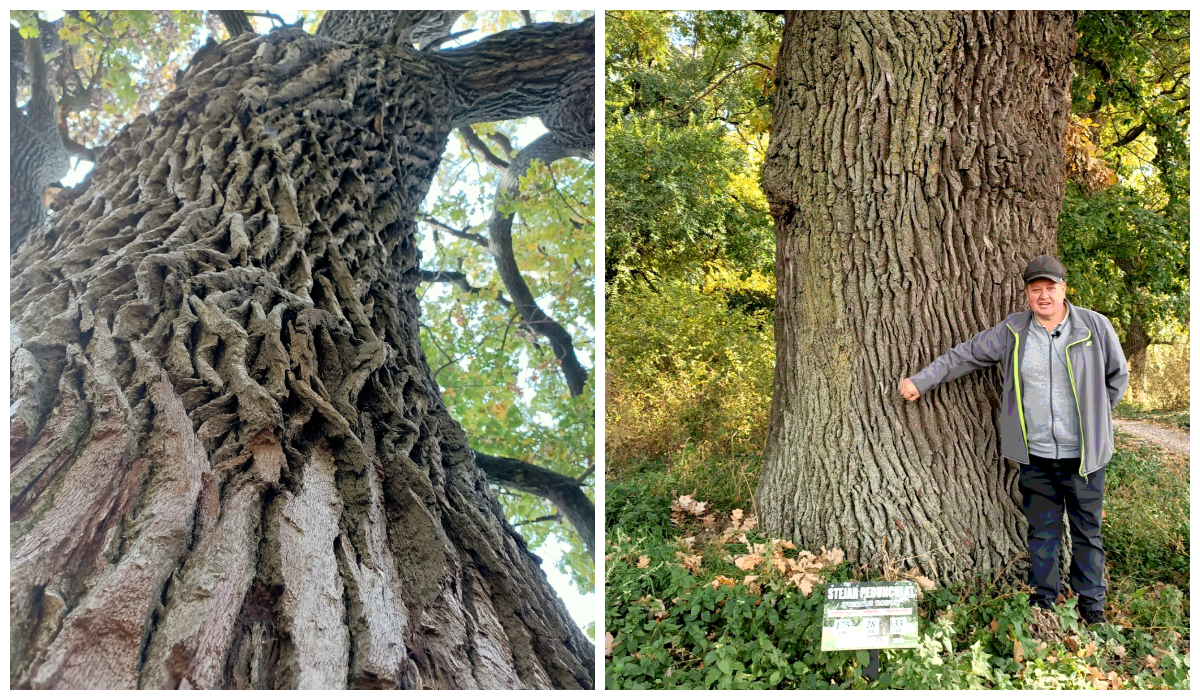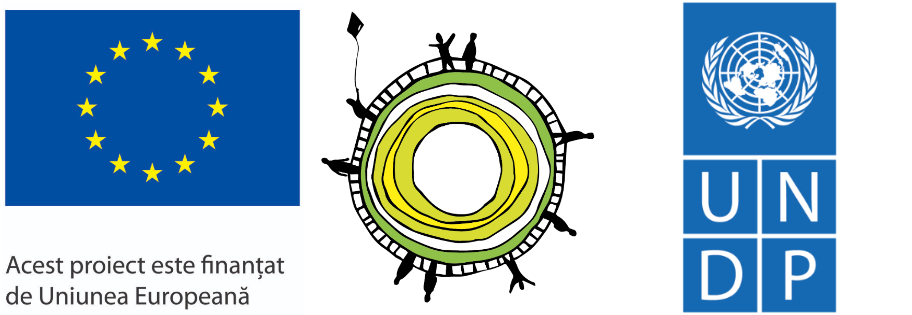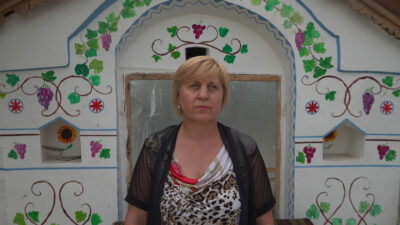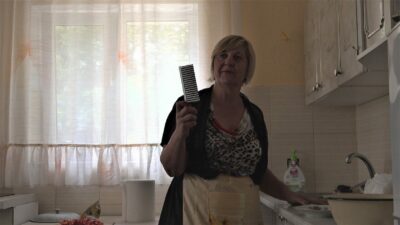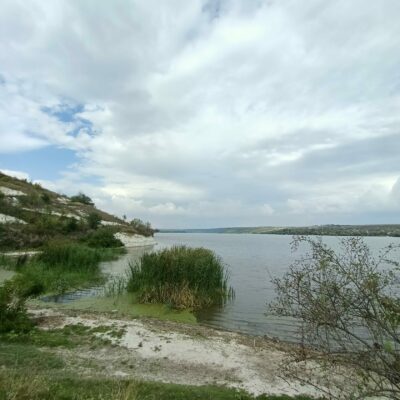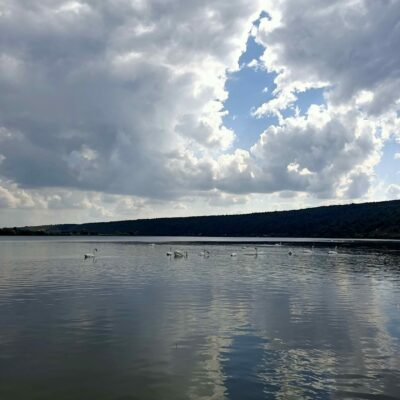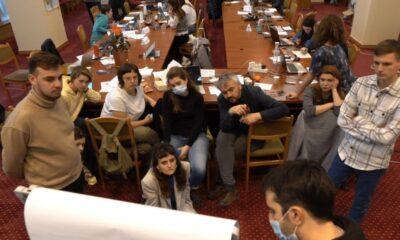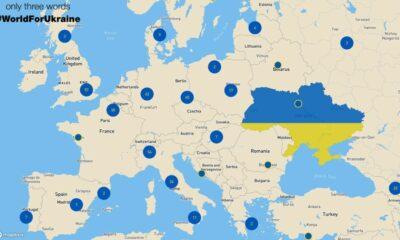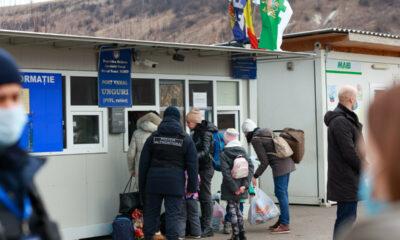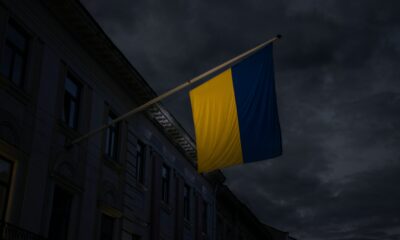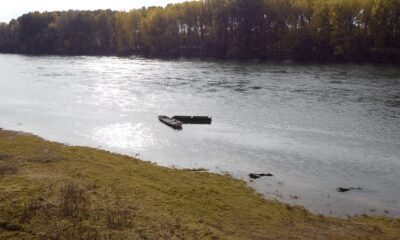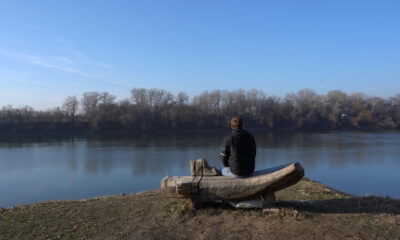Tourism
Suta de Movile: The place where fact is stranger than fiction
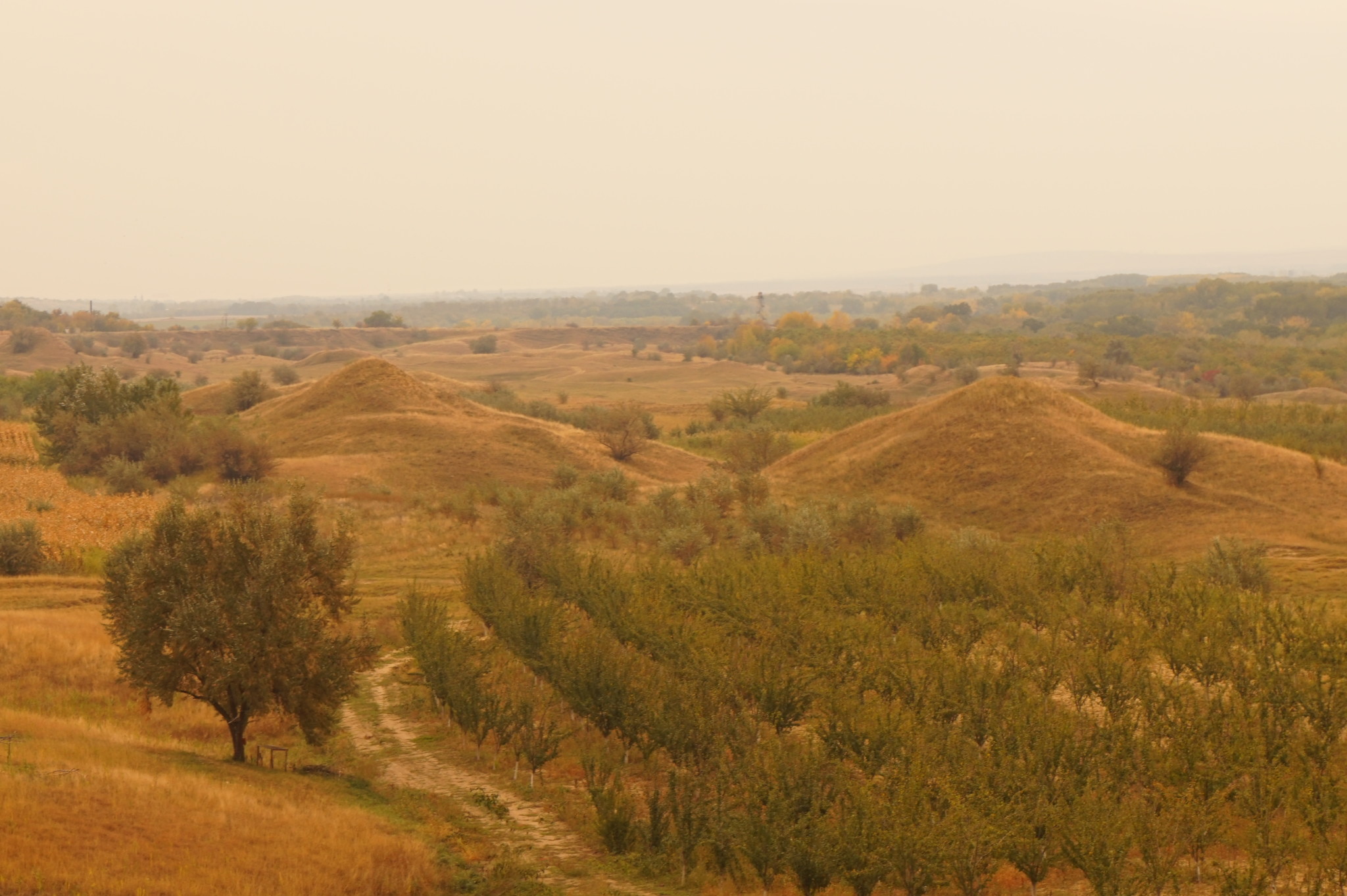
Darius Roby is a travel writer, translator, and an editor for Cluj.com, a city portal with information pertaining to life and tourism in Cluj-Napoca. He is also a contributor to Ukraine Today and is a member of the Hakluyt Society.
As I continue to explore Moldova, I often encounter the reality that sometimes fact is stranger than fiction. While I can hang my hat on having studied geology as an elective during my university days, I can admit that I am not the most adept at recognizing various types or stones or putting together the proverbial puzzle of “what once existed” in any particular location. The little sliver of land between the rivers Prut and the Dniester is remarkable from a geographical point of view. To put things into a simplified context, there are rocky hills and outcrops in the north and west, the famous codru forests in the center of the country, and in the south towards the Budjak region – the beginnings of the great Eurasian steppe. However, there are some places that hold a wealth of curiosity, natural beauty, and more questions than answers. As Moldova is a small country, it is also necessary to keep one’s eyes open, because should one blink, there is the chance that one may miss such treasures and with it – the opportunity to further one’s understanding of the world.
I became curious about the lands near the banks of the river Prut earlier this year during a visit to the Padurea Domneasca. It was during this trip that I heard that towards the north, there is a chain of hills which is referred to as o sută de movile (A hundred mounds) by Moldovans. The word movilă stuck with me in particular. In Romanian, it refers to a barrow or tumulus, in which the heroes and legends of the past were buried. Even as a child growing up in Mississippi, I was fascinated by the burial mounds constructed there centuries ago by the Native Americans. I have always come to associate such places with the mysteries of long vanished cultures and civilizations. In Eastern Europe, such barrows (here they are more often referred to by the Russian word – kurgan) are extremely common, being associated with the nomadic cultures that once ruled this region – the Cimmerians who warred with the Assyrians; the Scythians, the greatest goldsmiths of Eurasia; and the Sarmatians, the inventors of the heavily armed lancer, and indirectly – the medieval knight. A visit to Hermitage Museum in St. Petersburg would be all one needed in order to become fascinated by kurgans and the civilizations who built them.
As the days began to grow shorter and the final breath of Indian summer offered a brief whisper of glory in a fading and dying world, I began to once again feel the pull of nature. I felt the desire to explore, to discover more of the enchanting orchard that is Moldova. I was in the process of planning an expedition to another location in the country with a reputable anthropologist-turned tour guide in Moldova (Maria Axenti) when she brought up the subject of the sută de movile. After further discussions and getting to know one another better, we agreed to travel together to the sută de movile in order to gain better understanding the phenomenon.
One October morning under a light, but chilly early autumn rain, I joined Maria and Tanya and we made our way north from Chișinău by car. I do not wish to bore the reader concerning the details of the road taken, as it was more or less the same as the one I took to visit the Padurea Domneasca earlier this spring. I will make a note that as it was now autumn, Maria had the excellent idea to stop at a vineyard along the way in order to “borrow” a few grapes, perfectly ripe and clean from the cold shower, for the journey. Boots becoming caked with mud, I questioned in my mind whether it was such a good idea but smiled with delight while feasting on autumn’s gift to Moldova. I was instantly taken back to of the flavor of Moldovan wines, as the grapes were indeed of the rară neagra type. As I enjoyed the deep fruity flavor of the purple grapes, I was deep in discussion with Maria concerning Moldovan culture and history. It is a story that is grievous to me, the thought that this tiny country – green, quiet, and bountiful, has suffered the ravages of repeated invasions and migrations for millennia. Living in an uncertain world has left an impression on the land as well as in the mindset of the people. To travel is to come to better understand the world. To travel is to truly live.
After a few hours, we passed through Glodeni and Cobani, through which the river Camenca flows. Beyond, there is a north-south fork in the road that runs parallel with the river Prut. To the south lies the road towards Moara Domneasca where the wisents are kept. We turned north and shortly after passing the border into Rîșcani District, I was told to look out the window and my eyes widened in shock. Over the cold and windswept brown fields, there was a plethora of mounds, scattered over the fields as if they were mushrooms after a heavy shower. Some were rather small, others were exceptionally large and steep. The terrain, in its otherworldly autumn aura, is not large, stretching only 4 miles from north to west, and barely a mile east to west. Despite the name (sută means a hundred in Romanian), there are over 3000 mounds in the area, some only a few feet tall while the Movila Țiganului is nearly 100 feet tall and is topped with a cross, symbolic of its status.
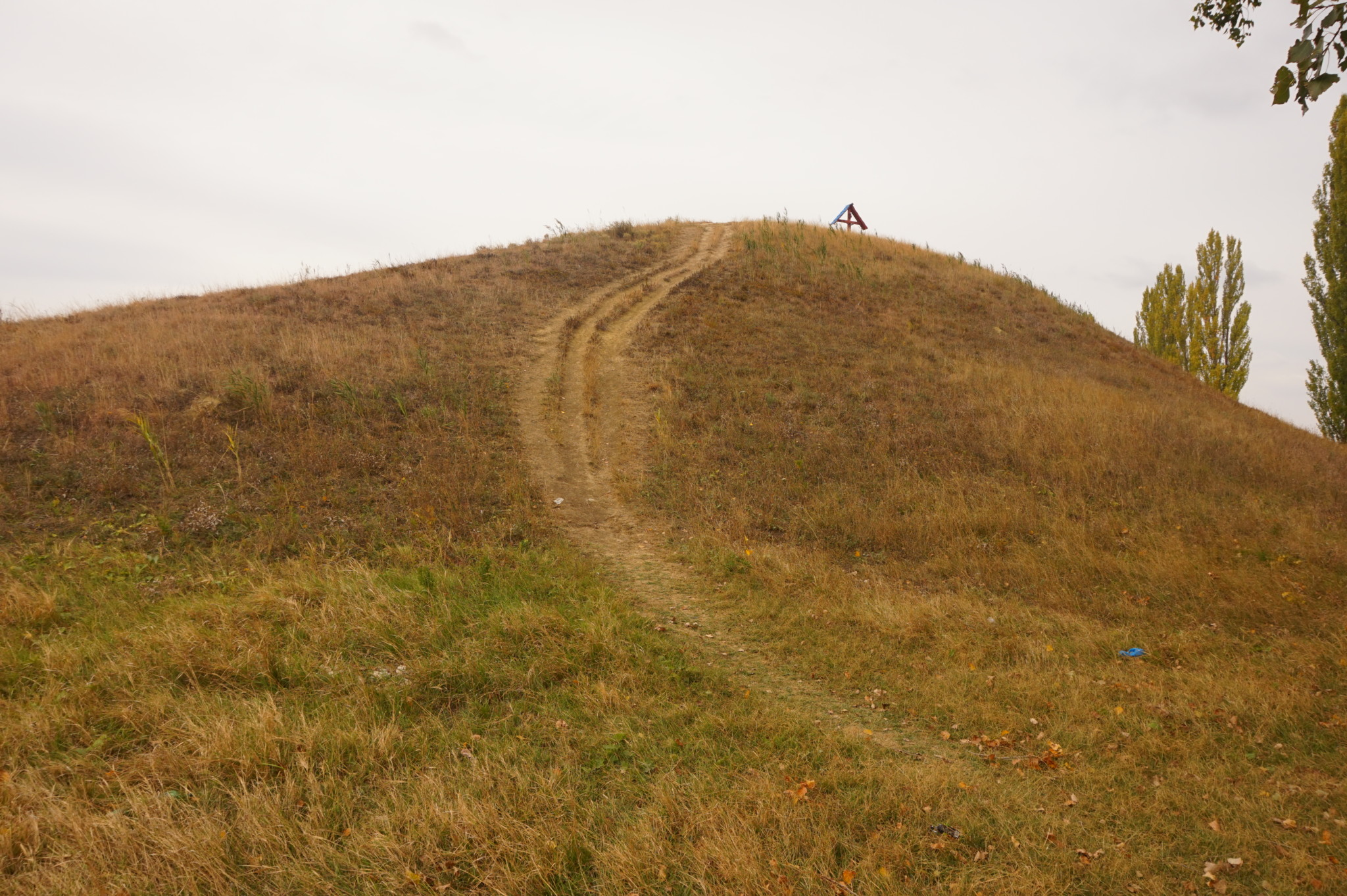
Climbing the somewhat steep path up the Movila Țiganului offers an enthralling panorama of the surrounding area. Leading down from the mound is a foot path that winds its way around a plum orchard. Beyond the neat rows of trees lies two other large mounds, perfectly accenting this strange sliver of land. Further towards the west, there are numerous smaller mounds, which lead to a wooded grove, through which the Prut flows. Towards the east, there were also numerous mounds of various sizes, bewildering the traveler, posing more questions than answers.
From where did these mounds originate? They were first attested to in 1716 by Dimitrie Cantemir, who referred to them in Latin as “Centum Monticuli.” Furthermore, there are romantic legends concerning a great battle that once took place in the area between nomadic tribes. It was said to have been a particularly bloody battle and afterwards mounds were erected over the bodies of the fallen warriors, with the most important heroes and leaders being buried in the larger mounds. It does serve to make one wonder who was deserving of the Movila Țiganului. As fascinating as that story is to the ear, the historian in my heart wishing it were indeed the case, the truth proved itself to be stranger than legend.
While the region was indeed once home to nomadic tribes, geology gives us the best answer regarding the origins of the mounds. They are not kurgans at all. Indeed, there is only a thin layer of grass and earth covering each mound, making it impossible for there to be burials. Instead, the mounds have a solid base of sedimentary rocks. 20 million years ago, the present day territory of Moldova was covered by the Sarmatian Sea, itself a remnant of the primordial Tethys Ocean. As is the way of the world – rivers change course, the ocean advances and recedes, and once great mountains slowly erode into hills. So too passed the Tethys Ocean, its only surviving remnants being the Black, Caspian, and the Aral Seas. The strange geography of the Glodeni and Rîșcani districts is attributed to the now extinct Sarmatian Sea. For example, in nearby Cobani lies the Stînca Mare with its great exposed stones. Essentially, it is a coral reef dating from eons ago. There is a long series of cliffs and terraces that run parallel for miles with the river Prut that is also attributed to primordial coral reefs. The presence of sedimentary rocks under the mounds in question proves that they are indeed a natural phenomenon. While scientists have yet to fully explain the reason for why mounds naturally formed in this particular area, unique in Europe, Maria did point out to me that the areas between the mounds tend to gather water, often forming lakes when the weather permits. It is all part of the charm, as the district’s name, Glodeni, stems from the Romanian word glod, which means “mud.” Everything seems to make sense, in a strange way…
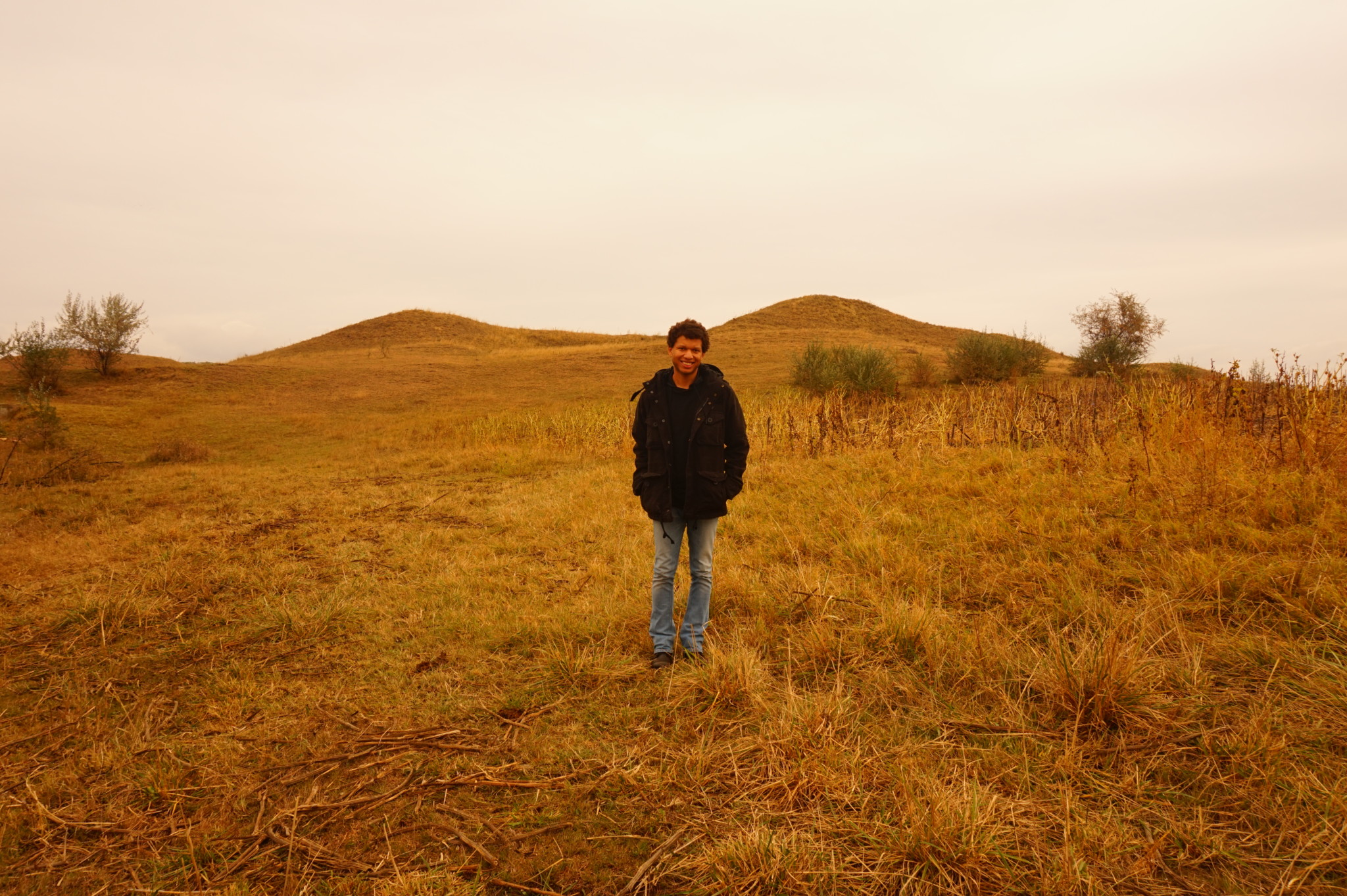
Here you have another story of a quiet, yet fascinating region of Moldova. There are many tales regarding cliffs, quarries, meetings of the devil at the crossroad, caves, and prehistoric peoples that I wish that I could share with you, the reader, but the phenomenon of the sută de movile is deserving of its own moment in the Sun. As always, my journey continues, and when the time is right I will share more stories with you regarding the little country between the Prut and the Dniester. It is most pleasing to me that there are people who feel love for this country, and harbor a desire to present it to the outside world. Even the most seasoned traveler will most often find himself pleasantly surprised, especially in the company of people like Maria who understands that even the smallest stone or the most remote village has a unique story to tell.
The trip was organized with the help of Maria Axenti from YG Moldova.
Maria Axenti is an anthropologist at Institute of Cultural Heritage of the Academy of Sciences of Moldova as well as the co-founder of YG Moldova, an organization dedicated to promoting the culture, people, and natural beauty of Moldova. To learn more about her work and for information concerning guided tours, visit YGmoldova.com.
Culture
The village of the first astronomer in the Republic of Moldova

Culture
Vîșcăuți, the Moldovan village where you feel like heaven
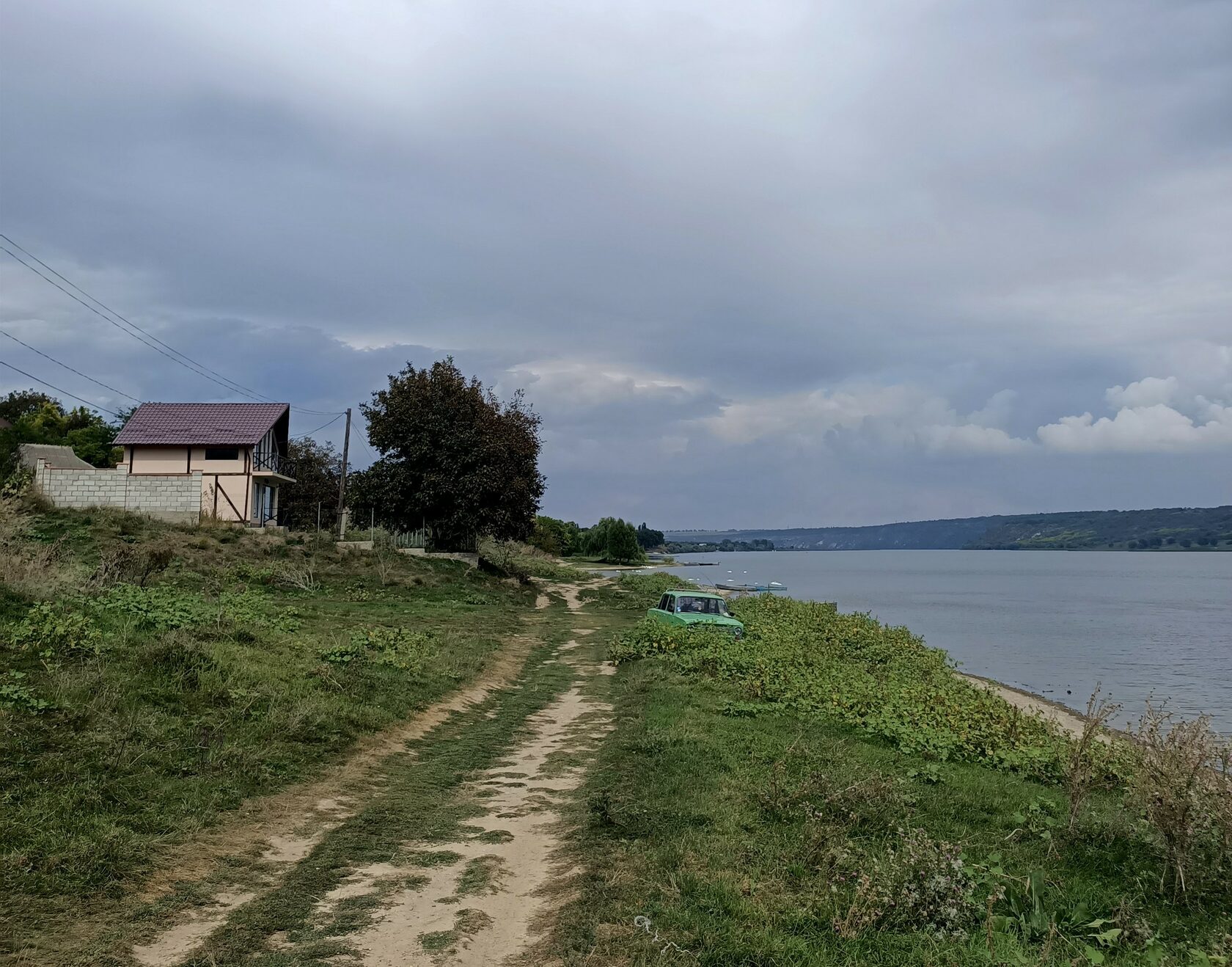
Reading Time: 9 minutesShe enters the house in a hurry and arranges the corner of the entrance mat. She leaves her purse and other items on the kitchen chair and starts washing the dishes. Then she goes to the second floor, changes the sheets on the beds, arranges the trinkets on the table, draws the curtains and opens the windows to aerate the room. From the window you can see the Nistru river, its banks covered with fresh vegetation. The woman sees to her tasks. She vacuums, she cleans the floors and starts all over again on the first floor.
Then she moves to the old house next door. Nobody was accommodated in this house yet, as everyone prefers “euro” repairs, as Lucia, the 52 years old administrator of the guest house, explains. But she doesn’t let the dust settle on the furniture and always has the rooms ready to accommodate guests.
The House of the Boyar is a guest house in the village of Vîșcăuți, Orhei, and can accommodate up to 8 persons. It is part of an eco-cultural touristic project “Bronze Half-moon” (“Semiluna de bronz”), which aims at attracting tourists in rural regions, offering them authentic experience, but it also promotes social entrepreneurship.
Besides involving the locals by creating jobs, the project also offers the opportunity and necessary support for the villagers to sell their products and services. Also, the profit is reinvested in the locality and its development. For example, now they work on developing a touristic trail through the forests of Vîșcăuți with all the necessary infrastructure, which will benefit the visitors of the village, as well as the locals.


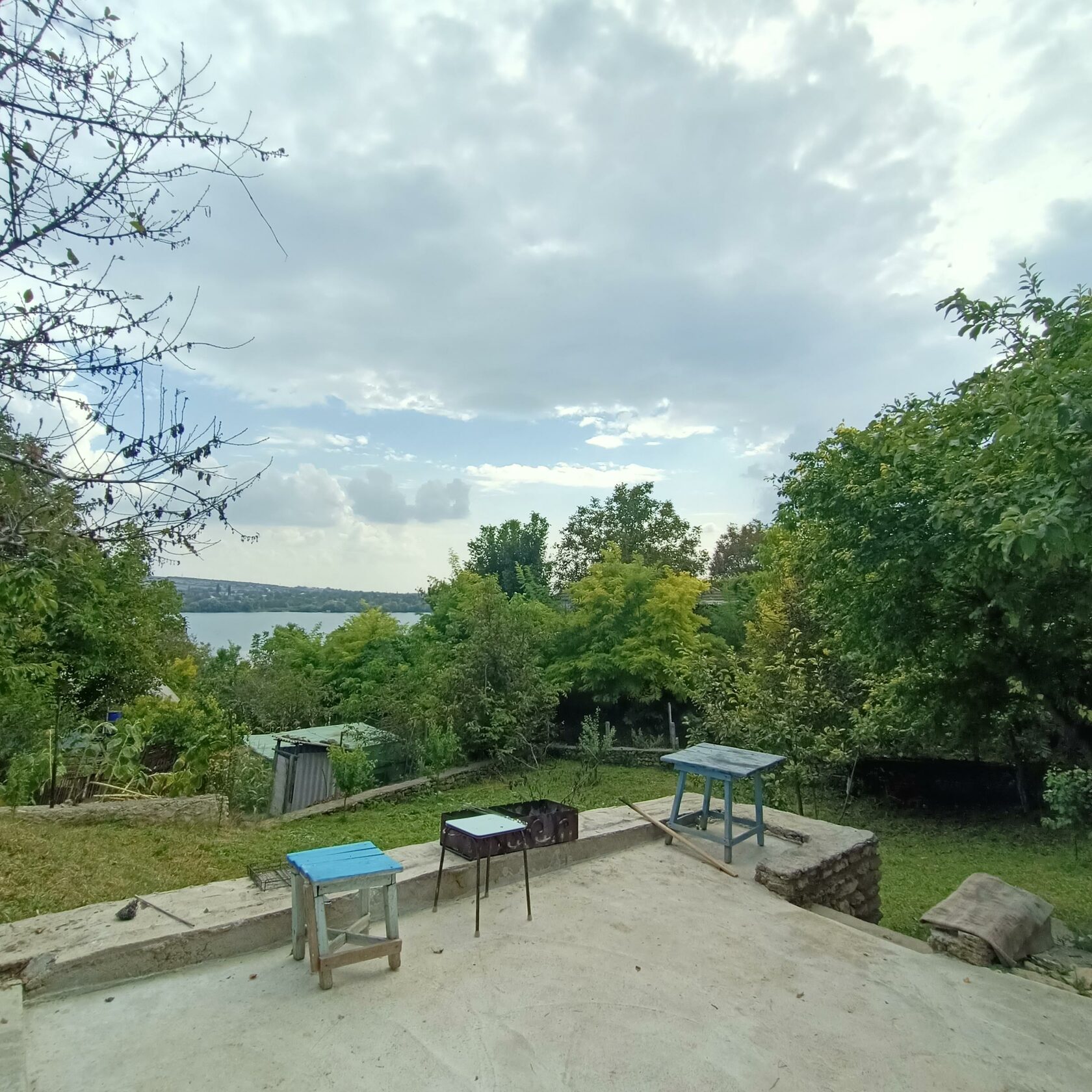
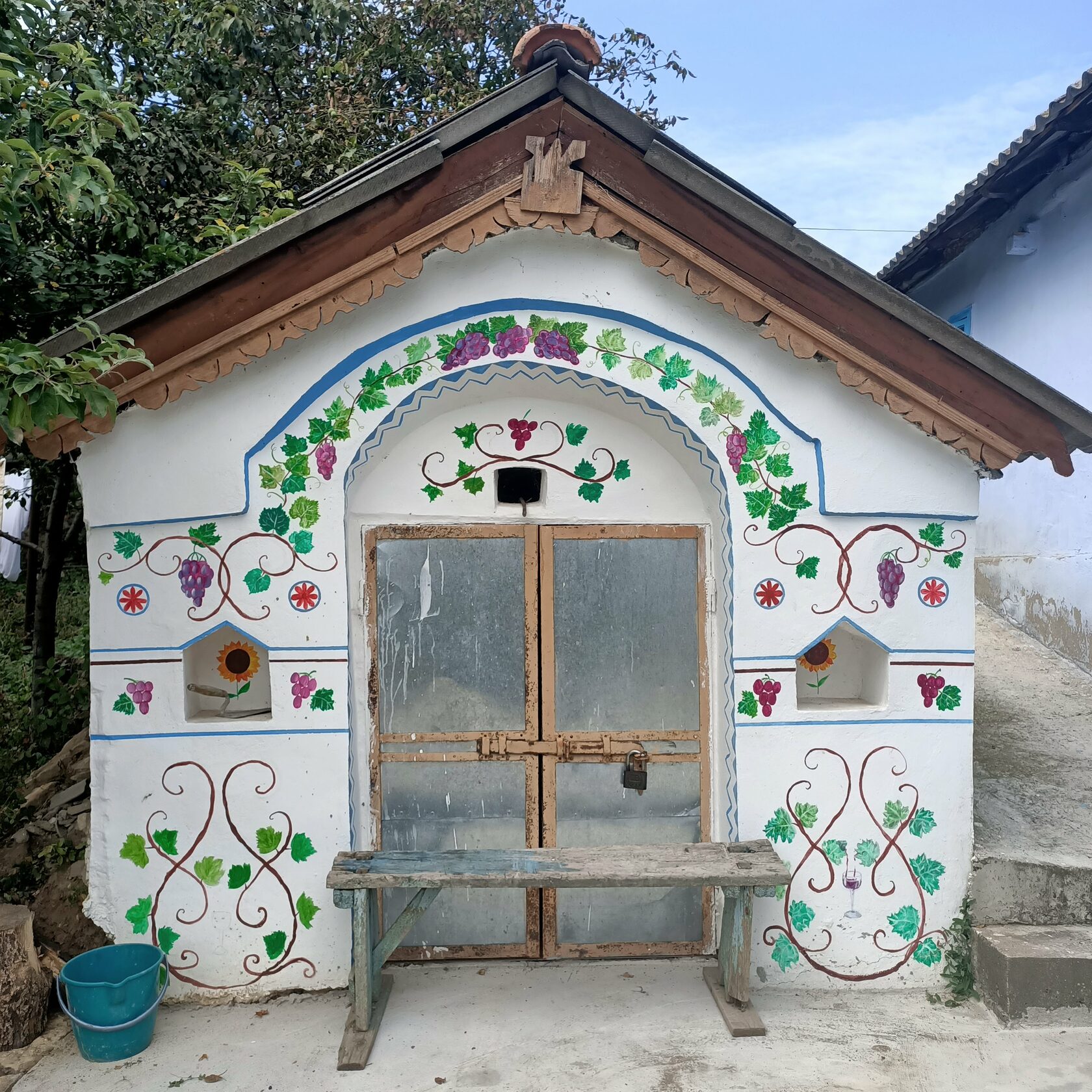
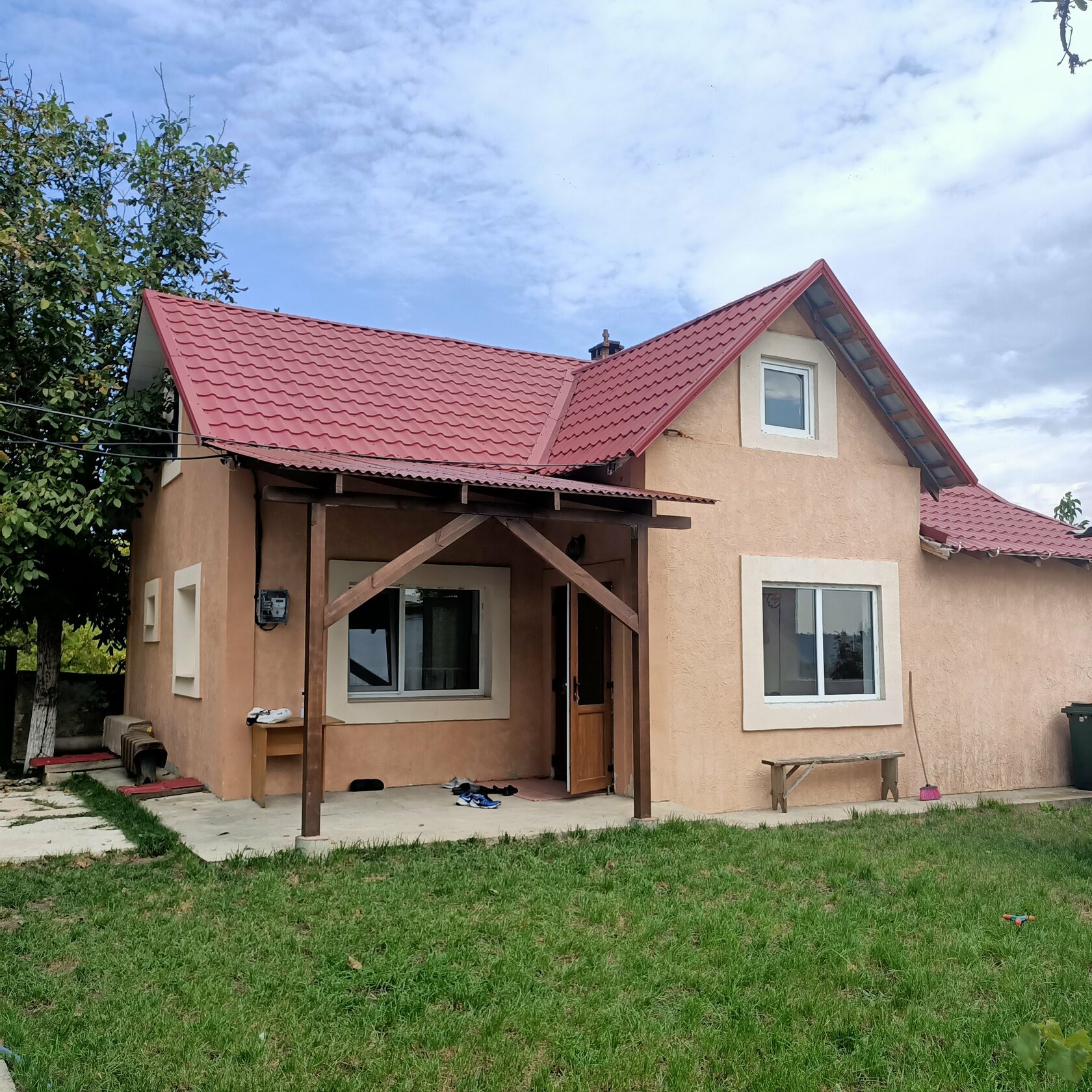
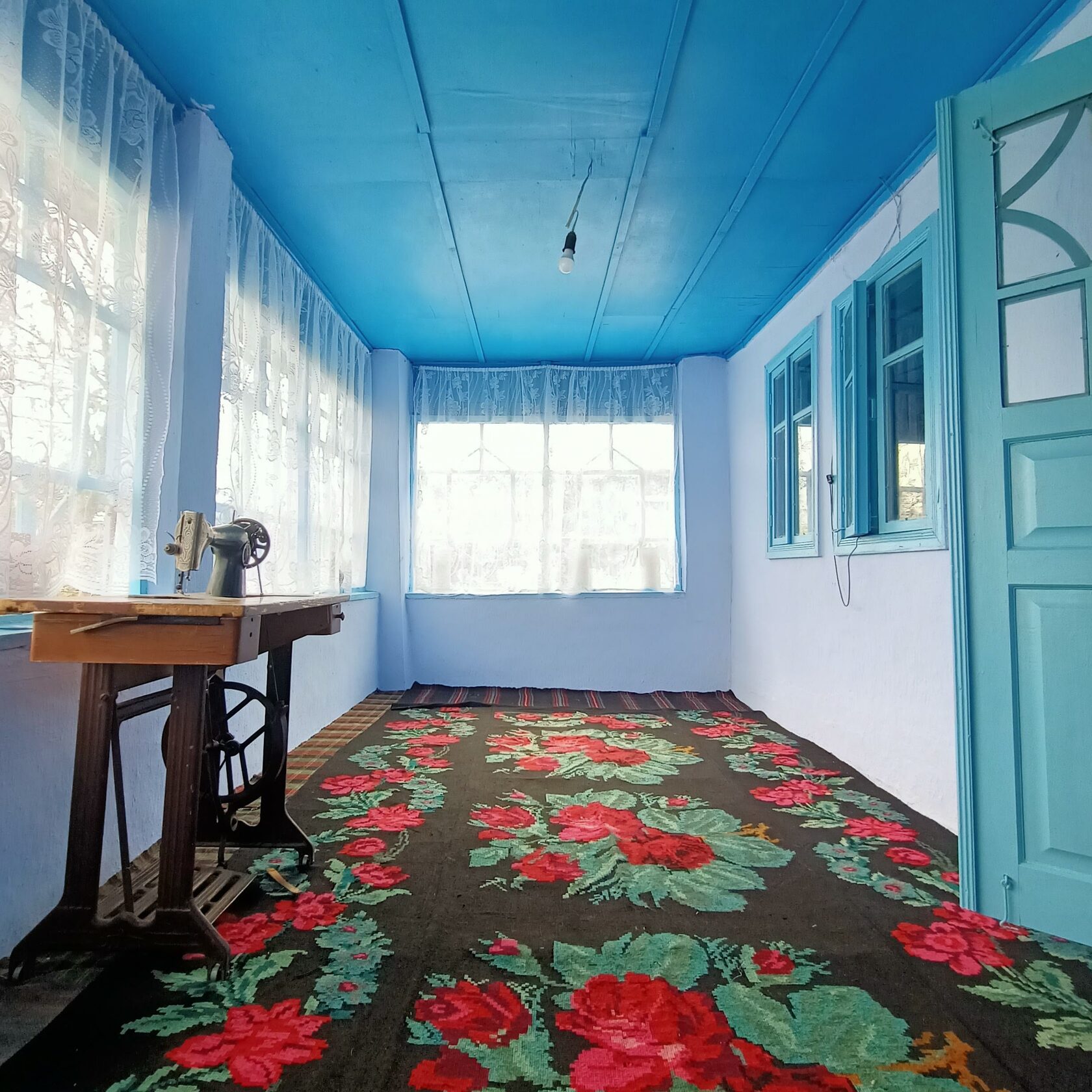
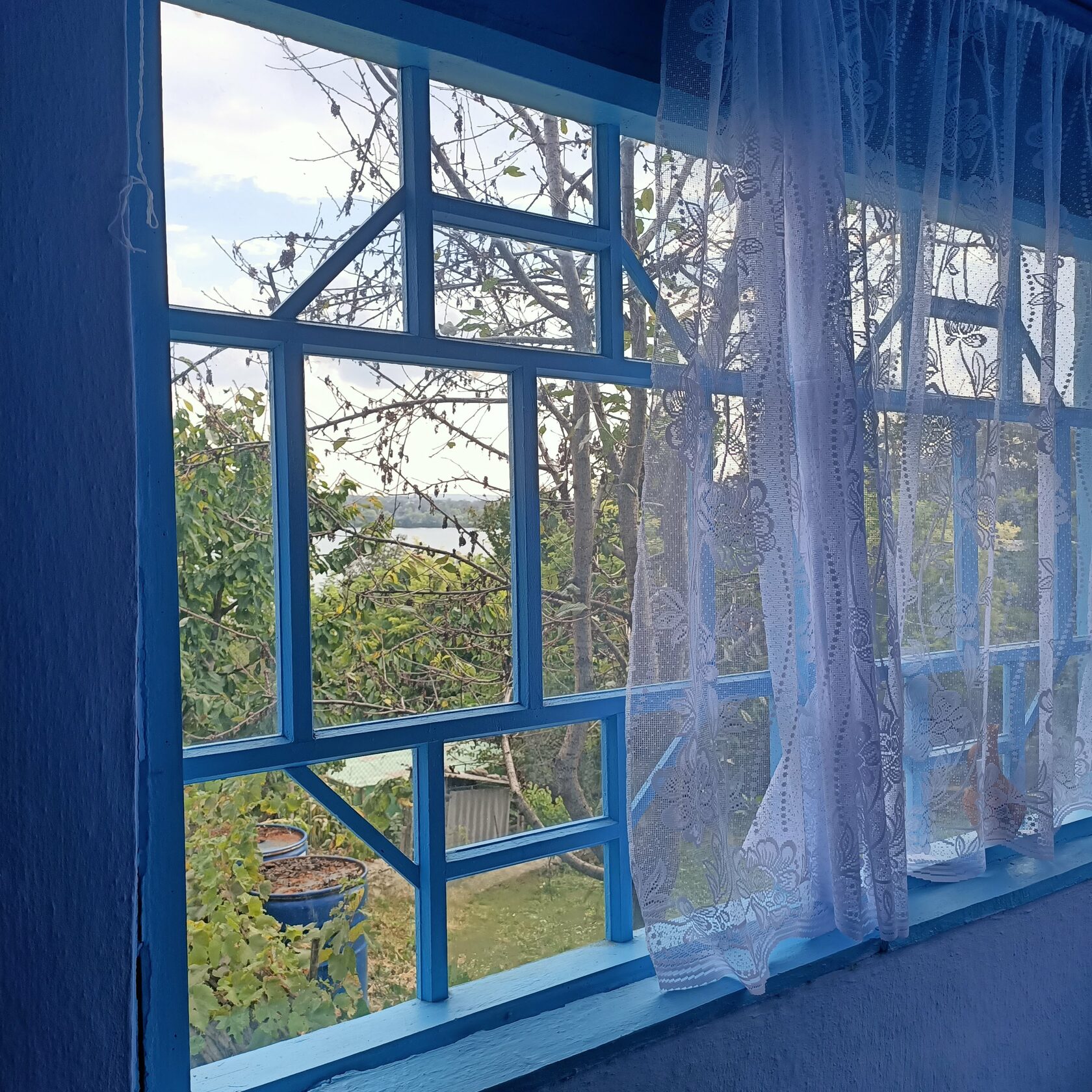
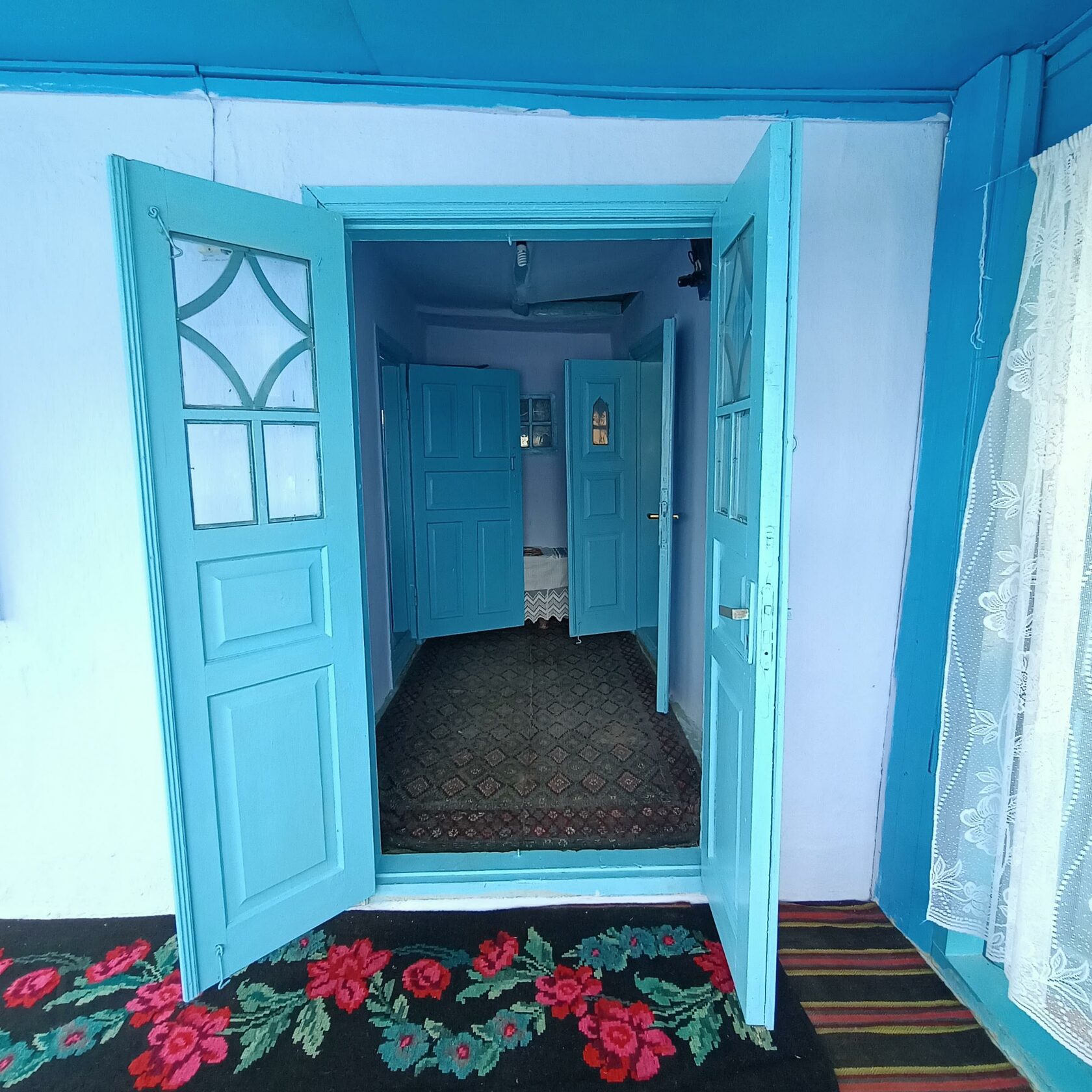
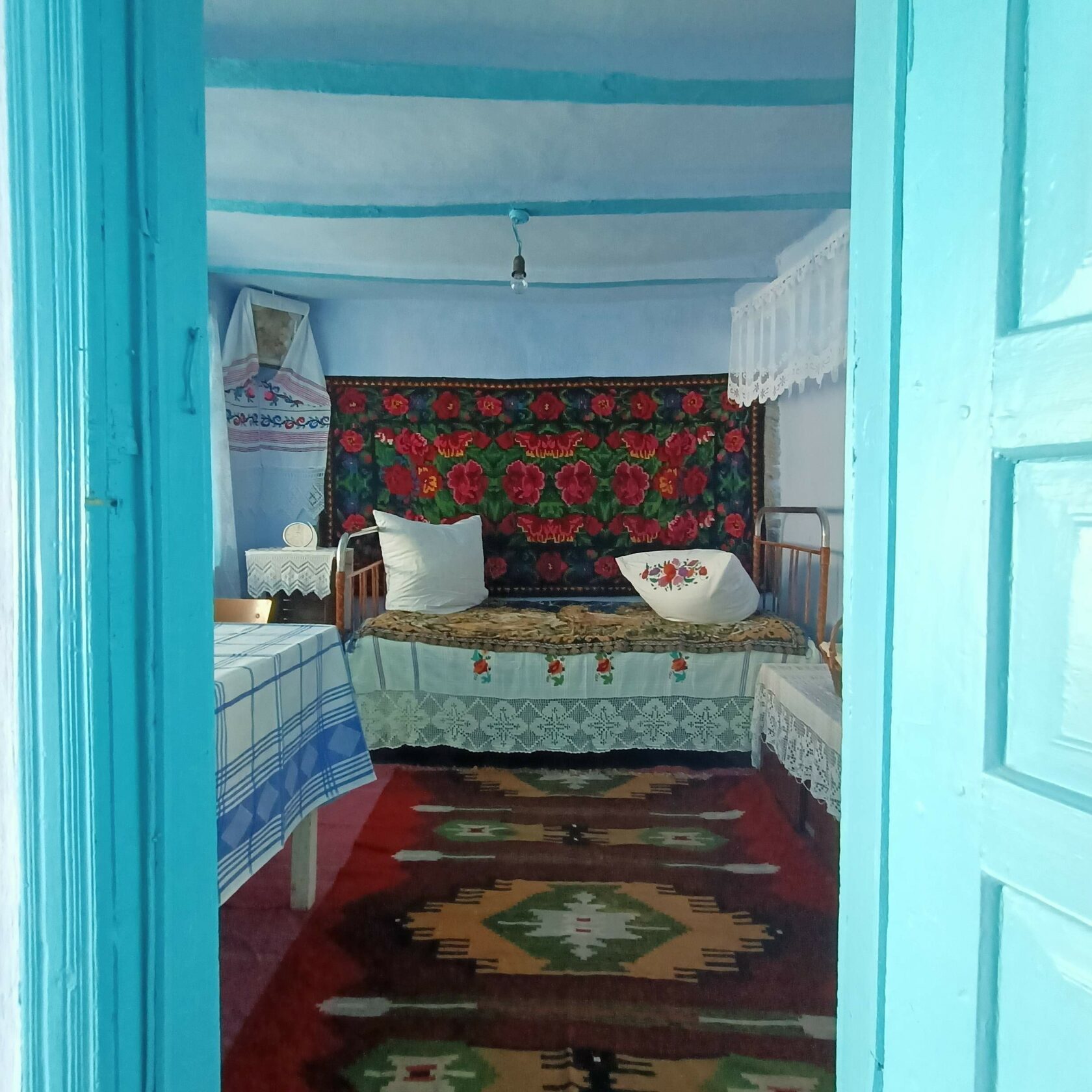
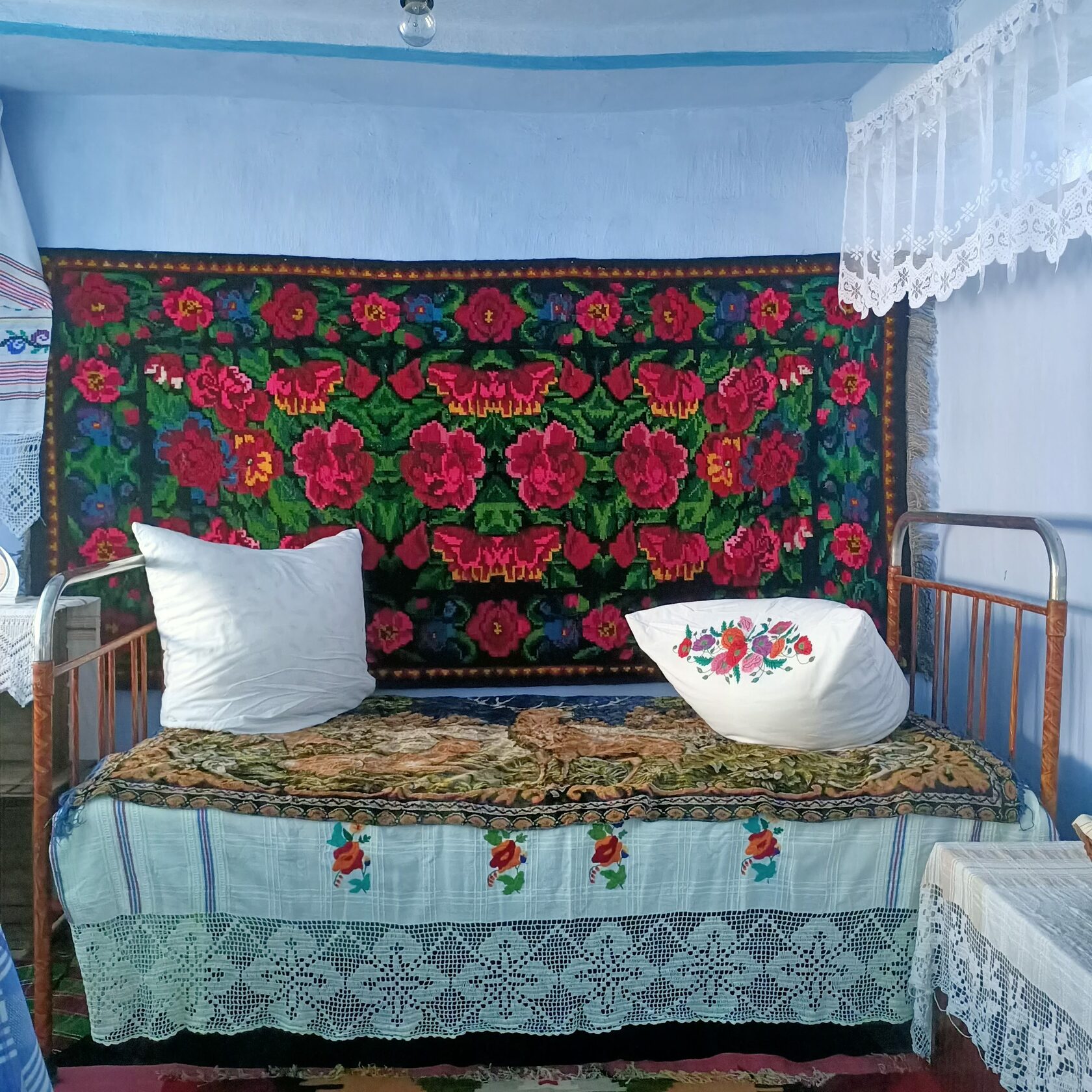
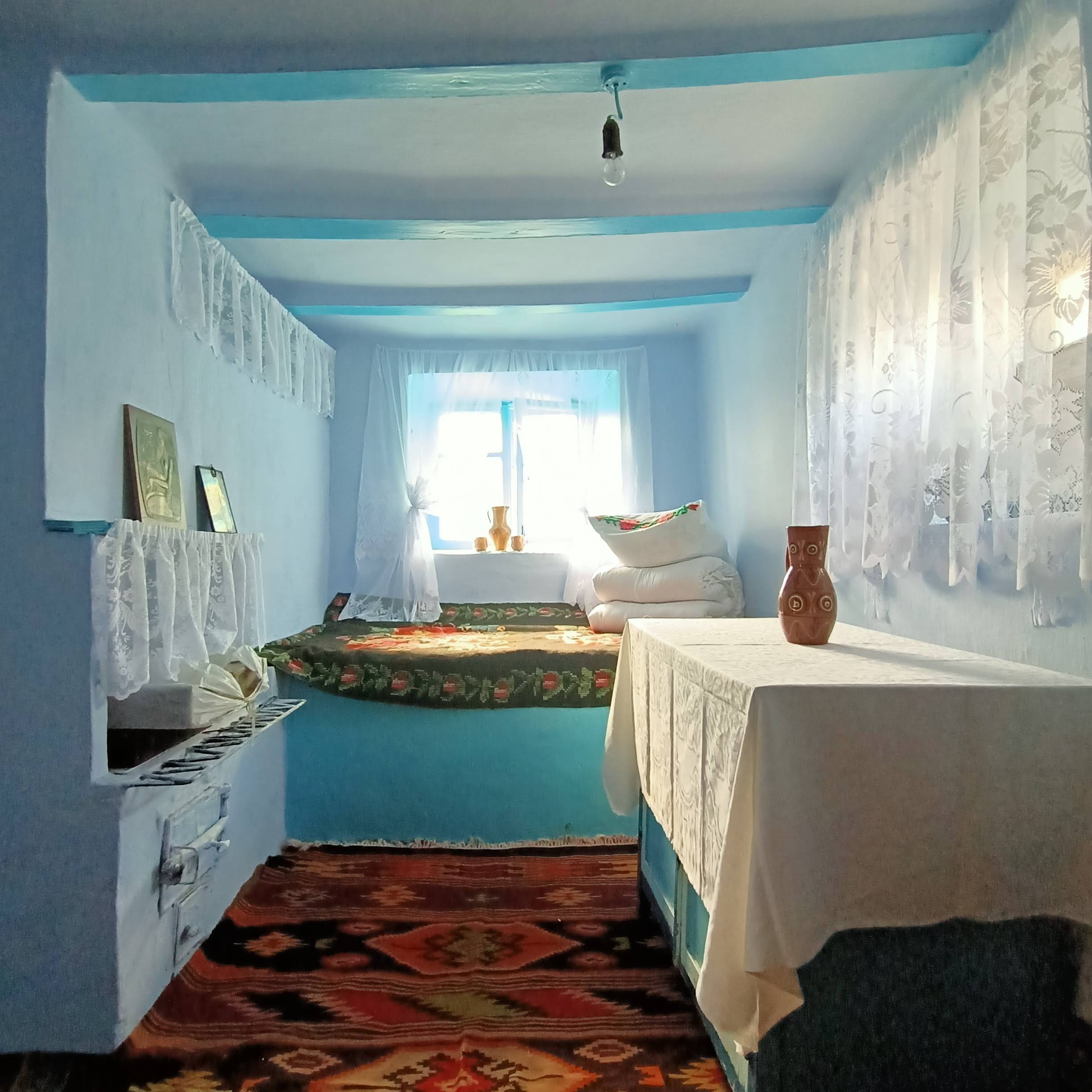
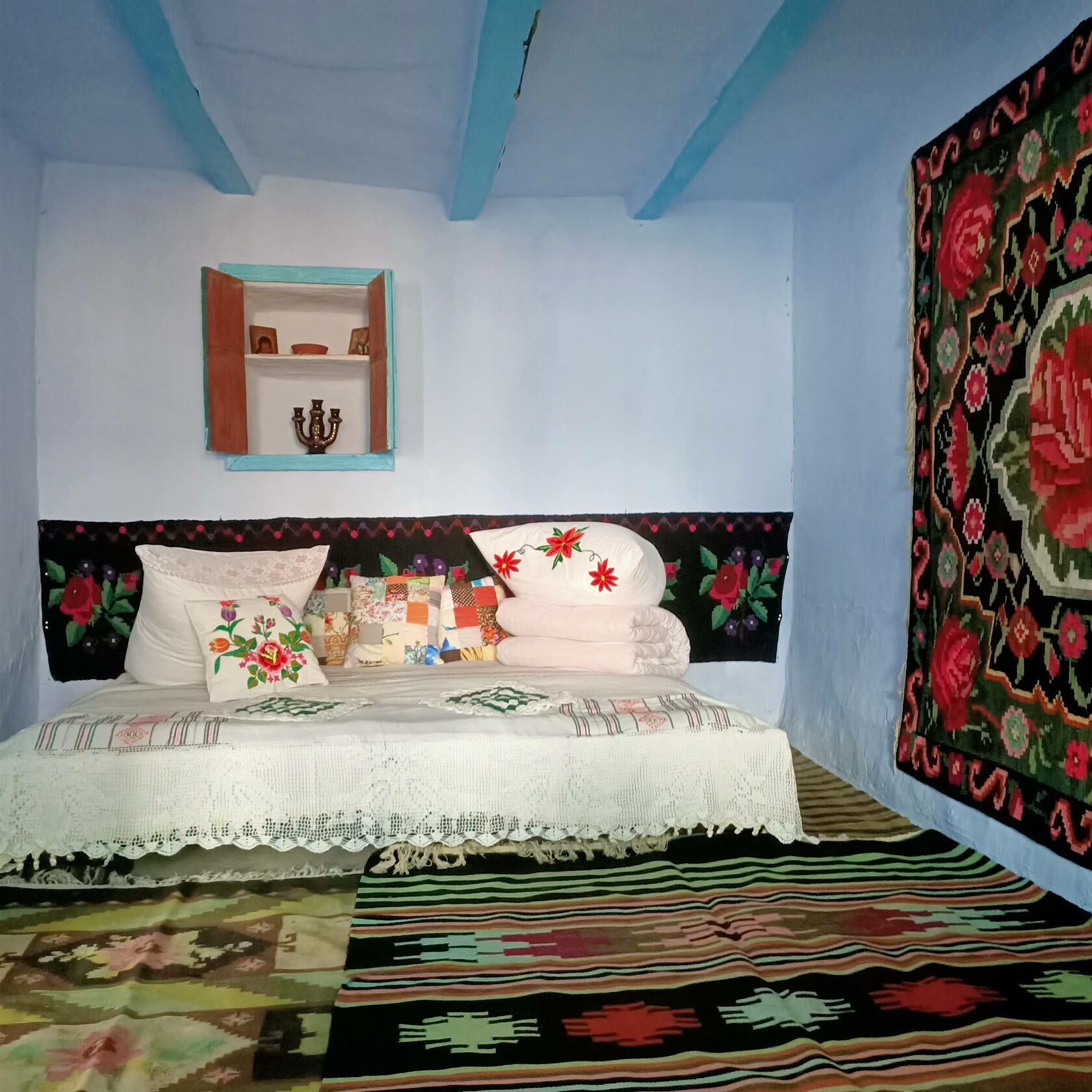
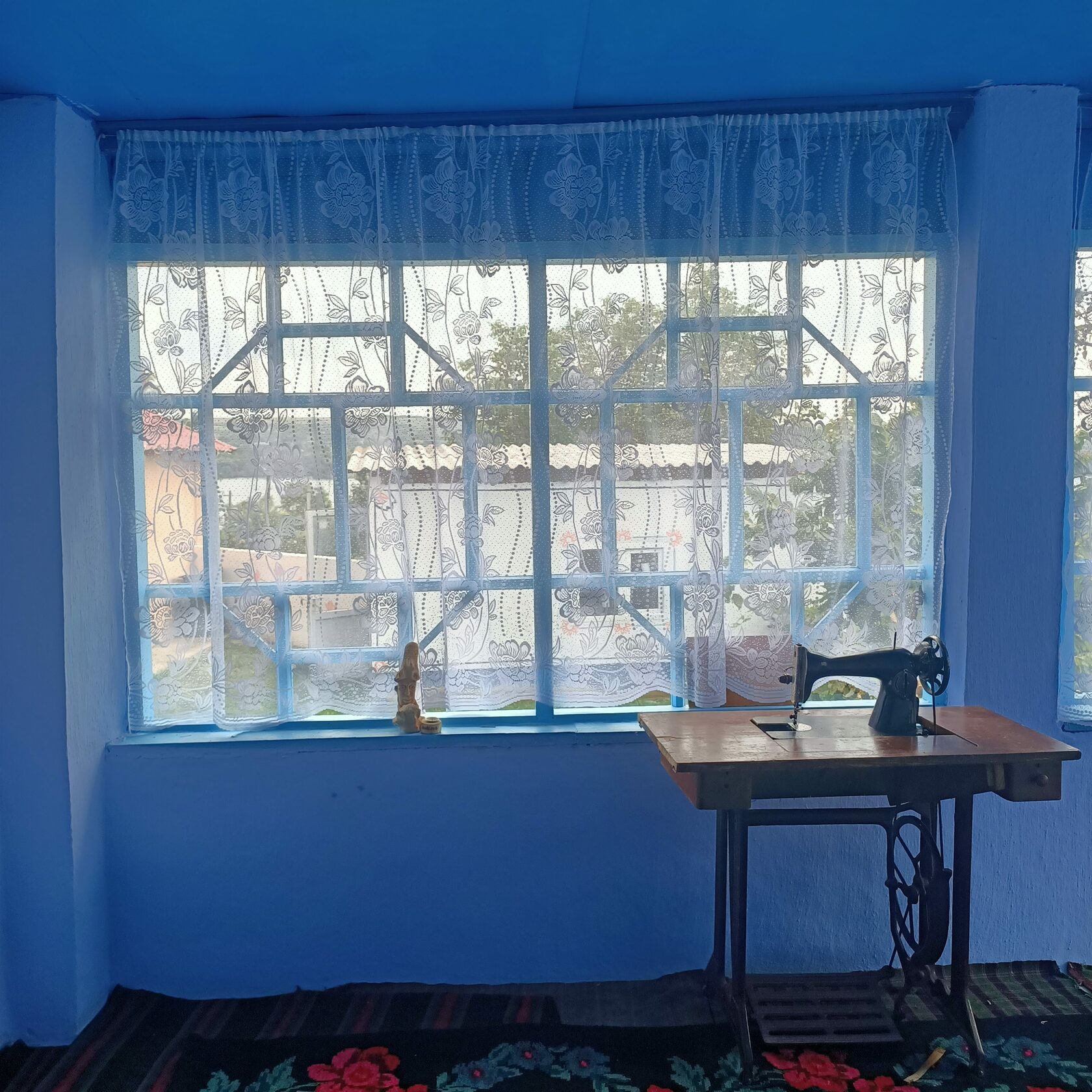
Lucia quickly sweeps in the yard and takes out the trash. She managed to tidy up in just about two hours. A group of tourists just left and another one is coming. Lucia Frunză took off her apron and is ready to welcome the guests. “They come from Chișinău, they come from everywhere,” she says in a hurry.
Lucia remembers when she received a group of 18 people. At their request, she cooked them plăcinte, pot roast and mămăligă. But she decided to make them a surprise and prepared some mulled wine. “As a bonus. I have a special recipe. I add black pepper, sugar, lemon, oranges and a little vanilla. These give the wine such an arooomaaa.”
She is a very good cook. And one of her secrets is a special knife, which she carries with her from home to the guest house and back. It’s a cleaver with a wavy pattern blade, so when she cuts produce, it has jagged edges. When she makes soup, she cuts the potatoes, the carrots, the meat and the onion – she slices everything with it. Once she brought a bowl of soup to uncle Colea. “Oh, this soup with farfalle is so good, it’s like at a restaurant!,” recalls Lucia amused about the impression she made on the neighbor.
The meadow and the cave
Gheorghe and Ludmila Frunză live down the road from the guest house. When Lucia has too much on her plate, the old couple helps her out with cooking or with laundry. He is 74 years old, and she is 70. In summertime, the couple spends their second youth in Vîșcăuți. In winter, when it’s cold, they go back to Chișinău.
Gheorghe was born here, and he knows all the surroundings like his five fingers. He knows how to reach the Boyar’s Cave two ways: one is more difficult and the other one easier.
If you are in good shape and have the courage, you can reach the Boyar’s Cave through the ravine. But Gheorghe’s legs can’t keep up with this trail as he used to. The pathway to the cave goes between two rocky hills. You will step on the slippery rocks, washed by the cold water of the springs. You will climb the trees so thick, you can’t embrace with both hands, knocked down by the summer rain.
You will slowly advance towards the cave located up the hill, where you’ll see the Cornelian cherry dogwood full of hard-to-reach red berries, which local people pick for making compote. If you try and yell between the two rocky hills, your voice will not travel far. You will have no use of modern technologies, and your phone will only be good for taking pictures. Here you can breathe fresh cold air, while embraced by the silence dictated only by the murmur of the water.
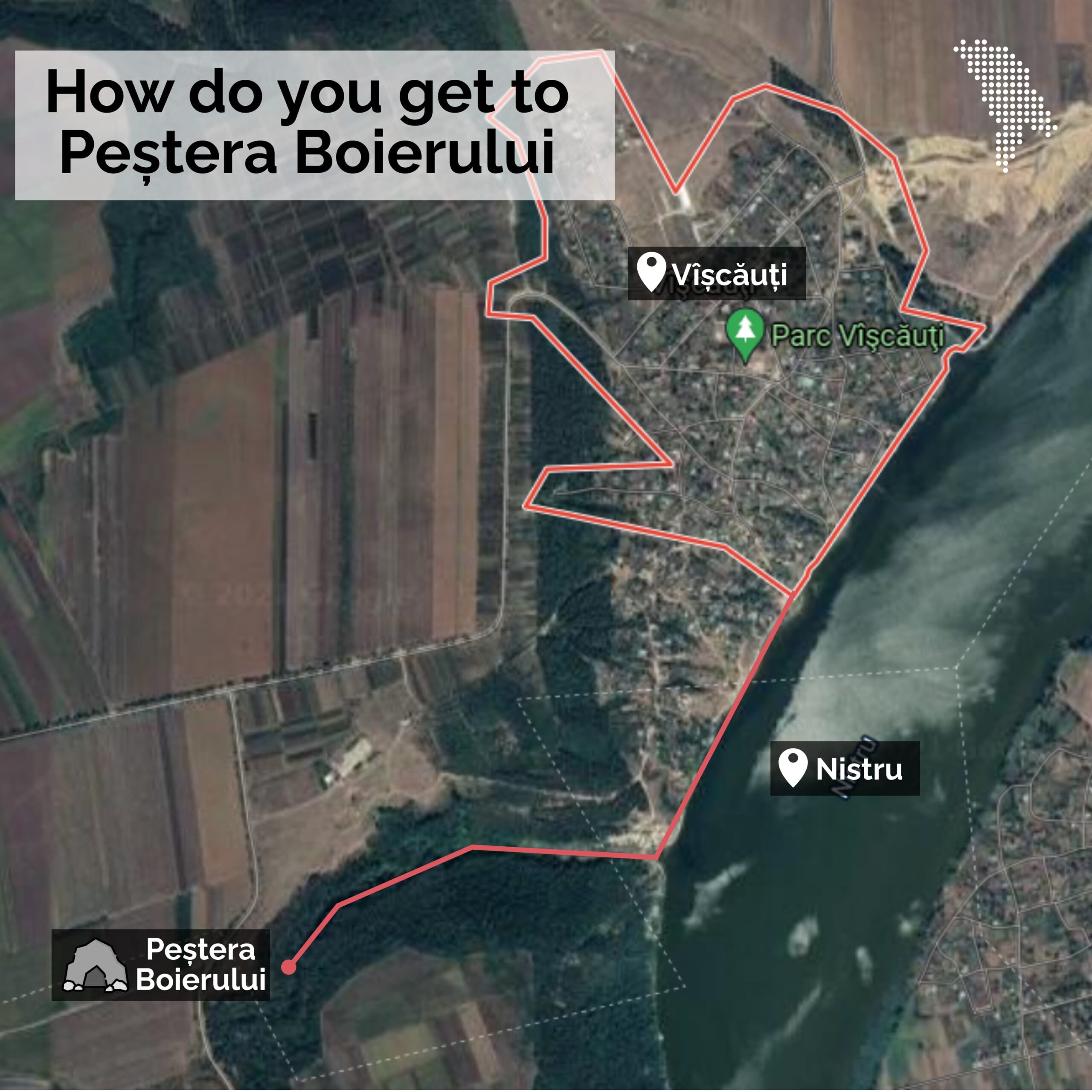
Once you reach the cave, you need a lantern. On the walls you can see “V+M=LOVE”, but also hanging bats – almost embraced one next to another. There are three entrances to the cave and many labyrinths. No one knows exactly what are its measurements. There are some assumptions that it’s one kilometer long. But you can’t really reach its depths, because it collapsed a long time ago.
There are many legends about the origin of the cave. Gheorghe tells us that it used to be a quarry, tons of rock being extracted for the construction of churches.
Actually, according to archives, the cave was dug by the Sandino boyar around 1900 for storing wine barrels.
Locals say that during the two world wars, the cave was used as shelter for their grandparents and great-grandparents, and that they were guarded by the soldiers stationed in Vîșcăuți.
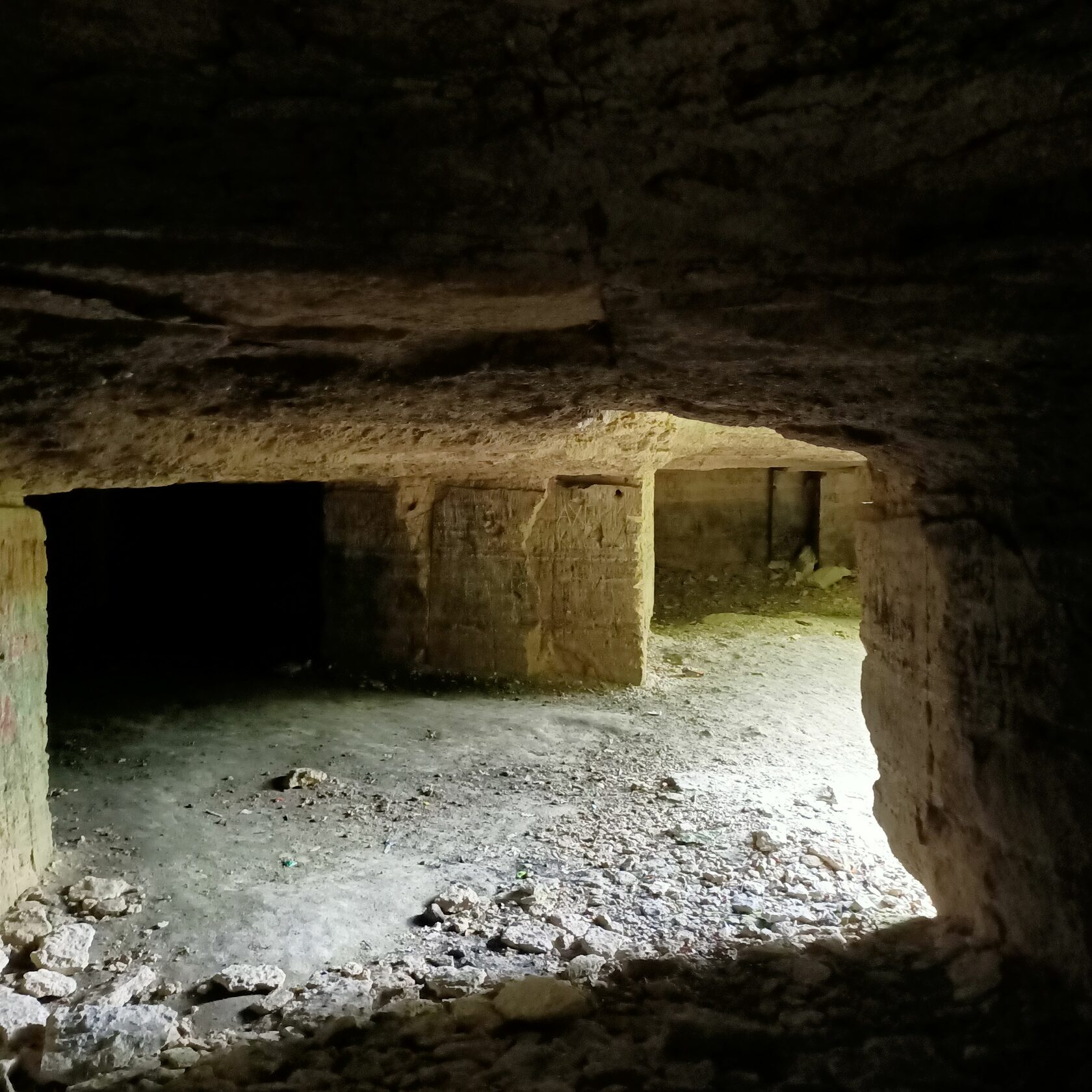
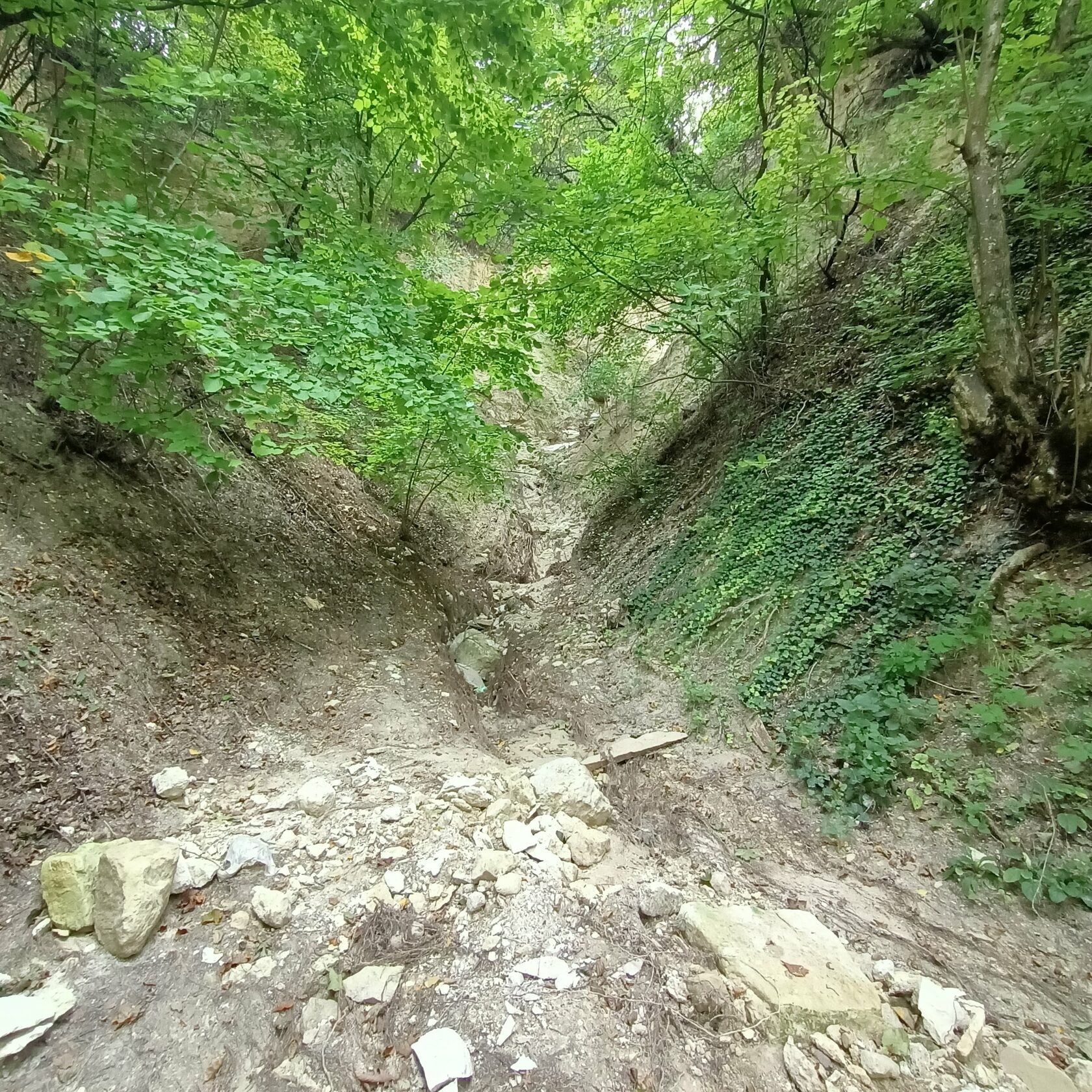
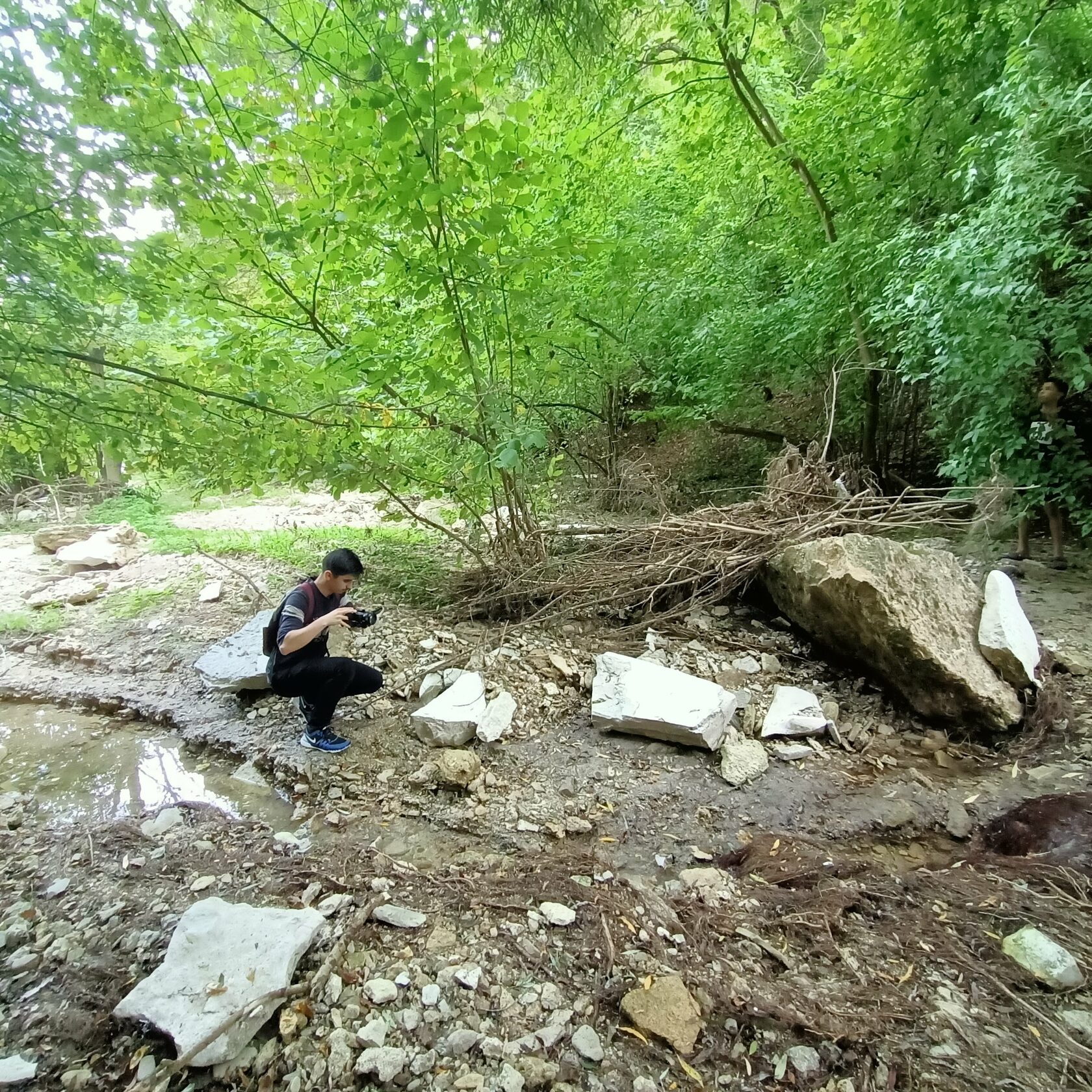
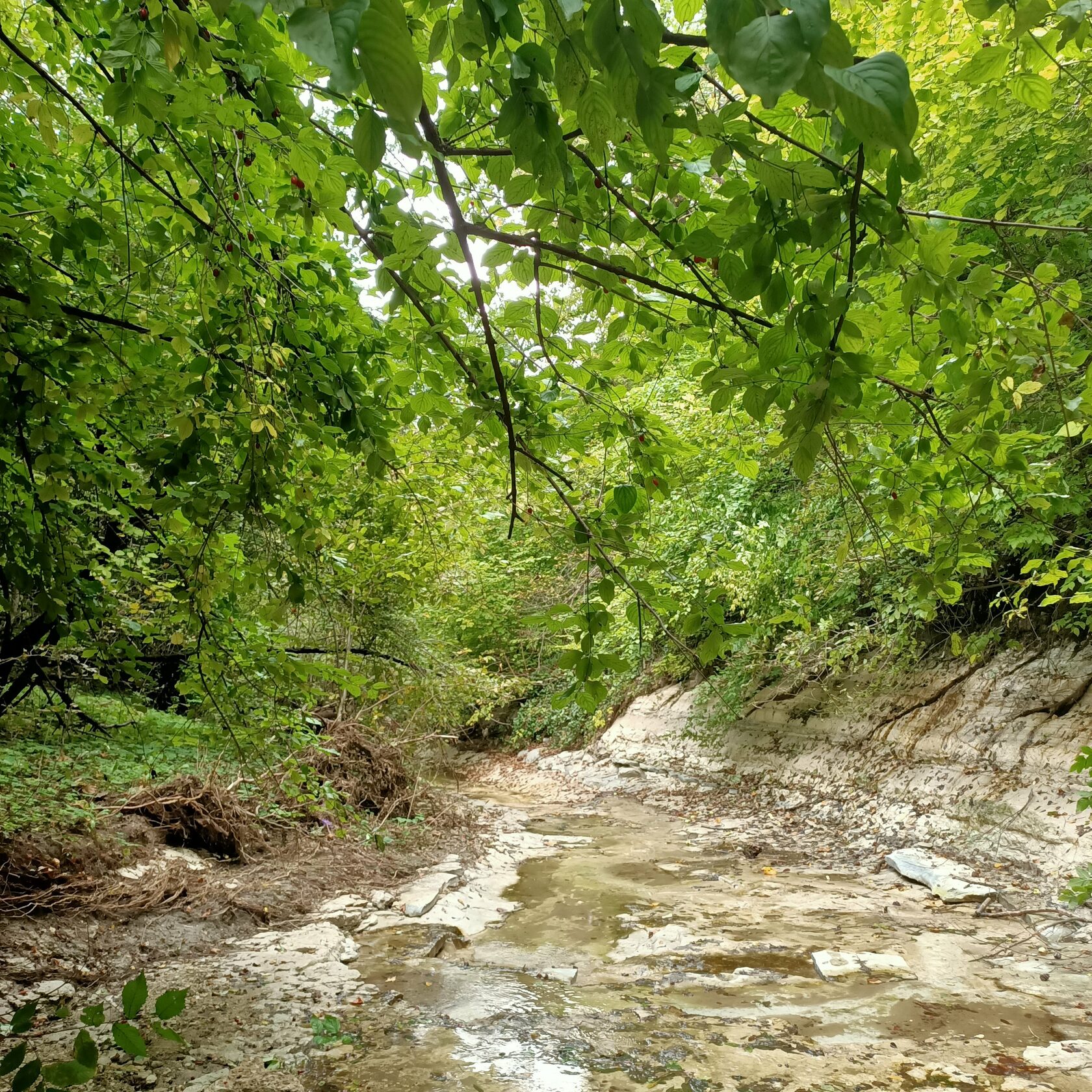
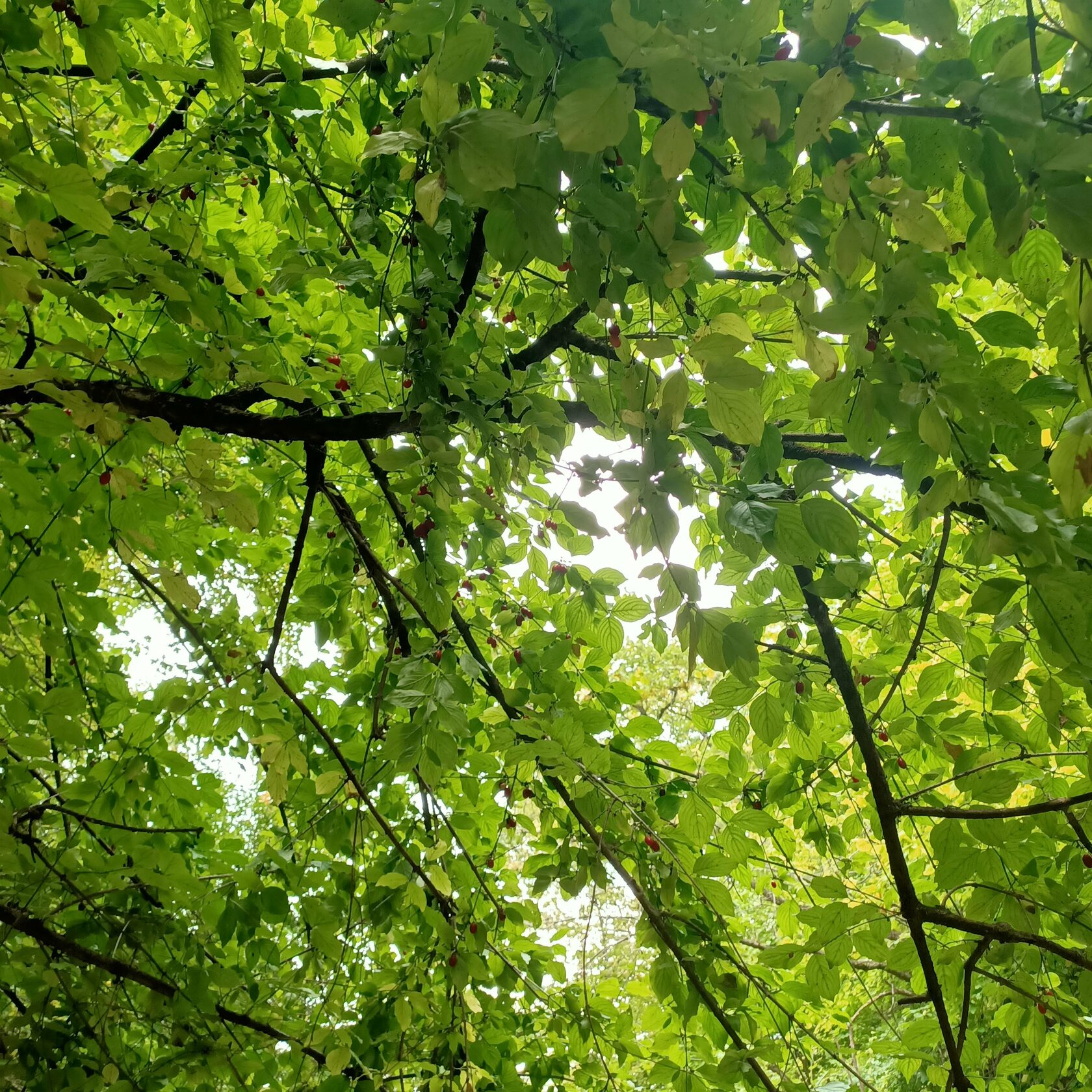
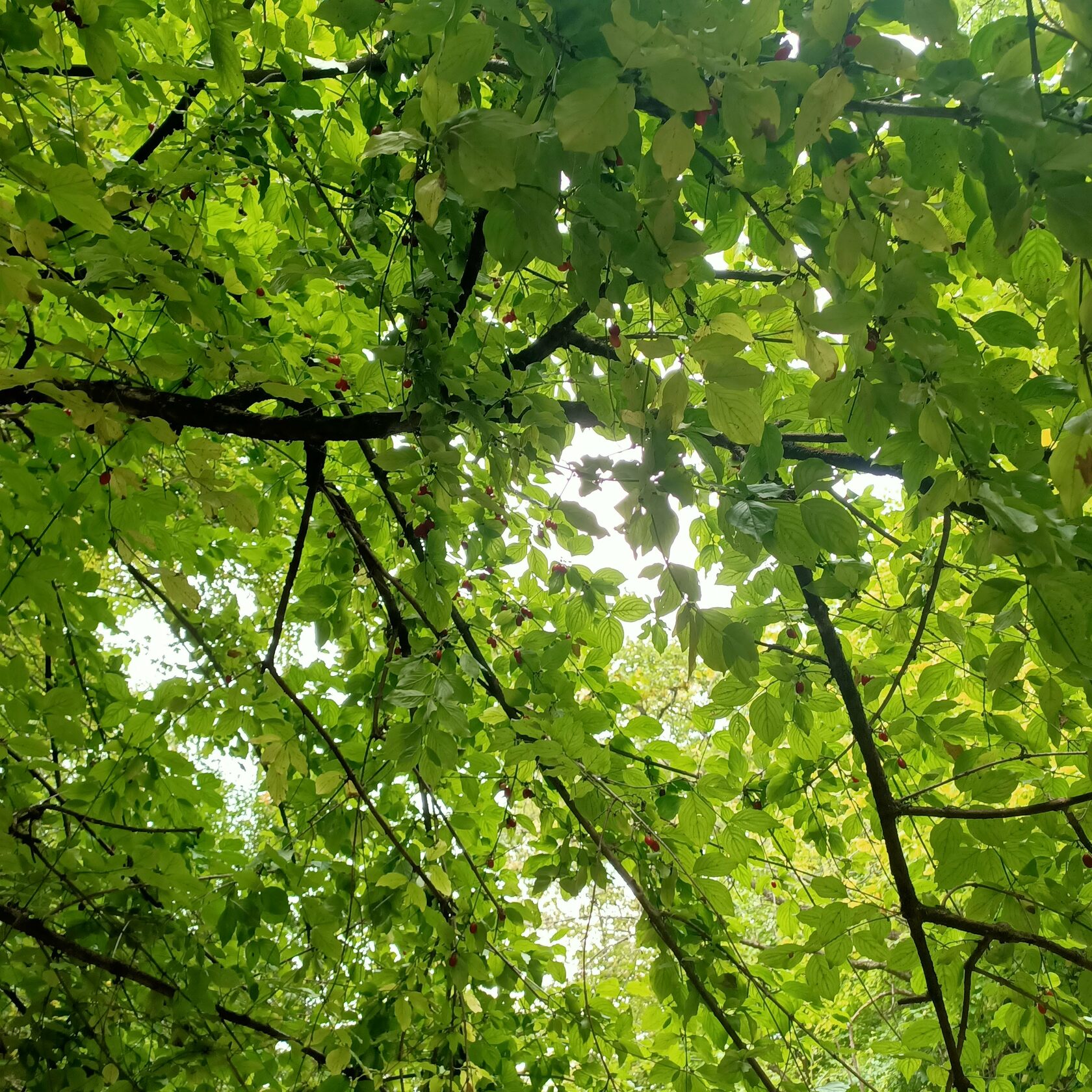
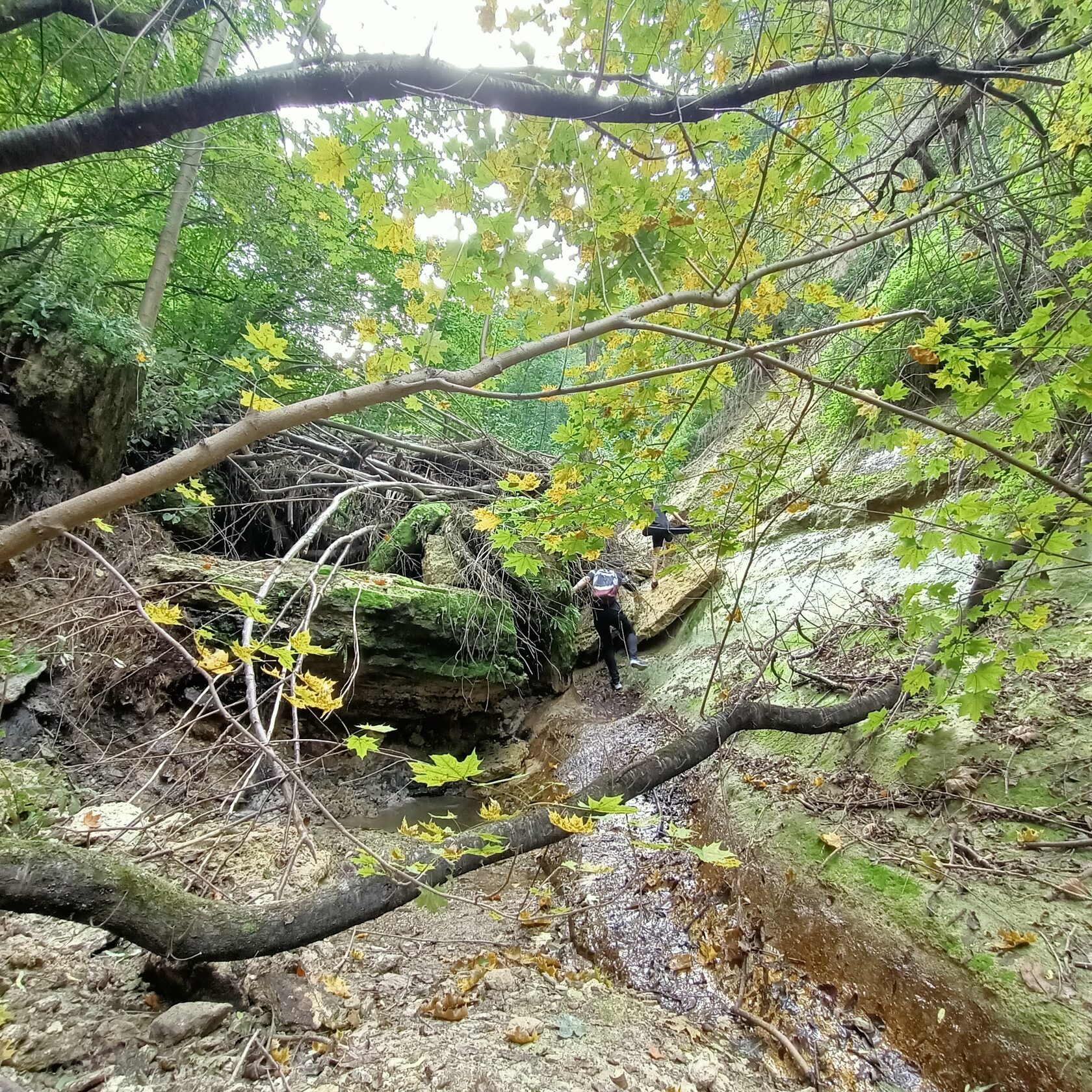
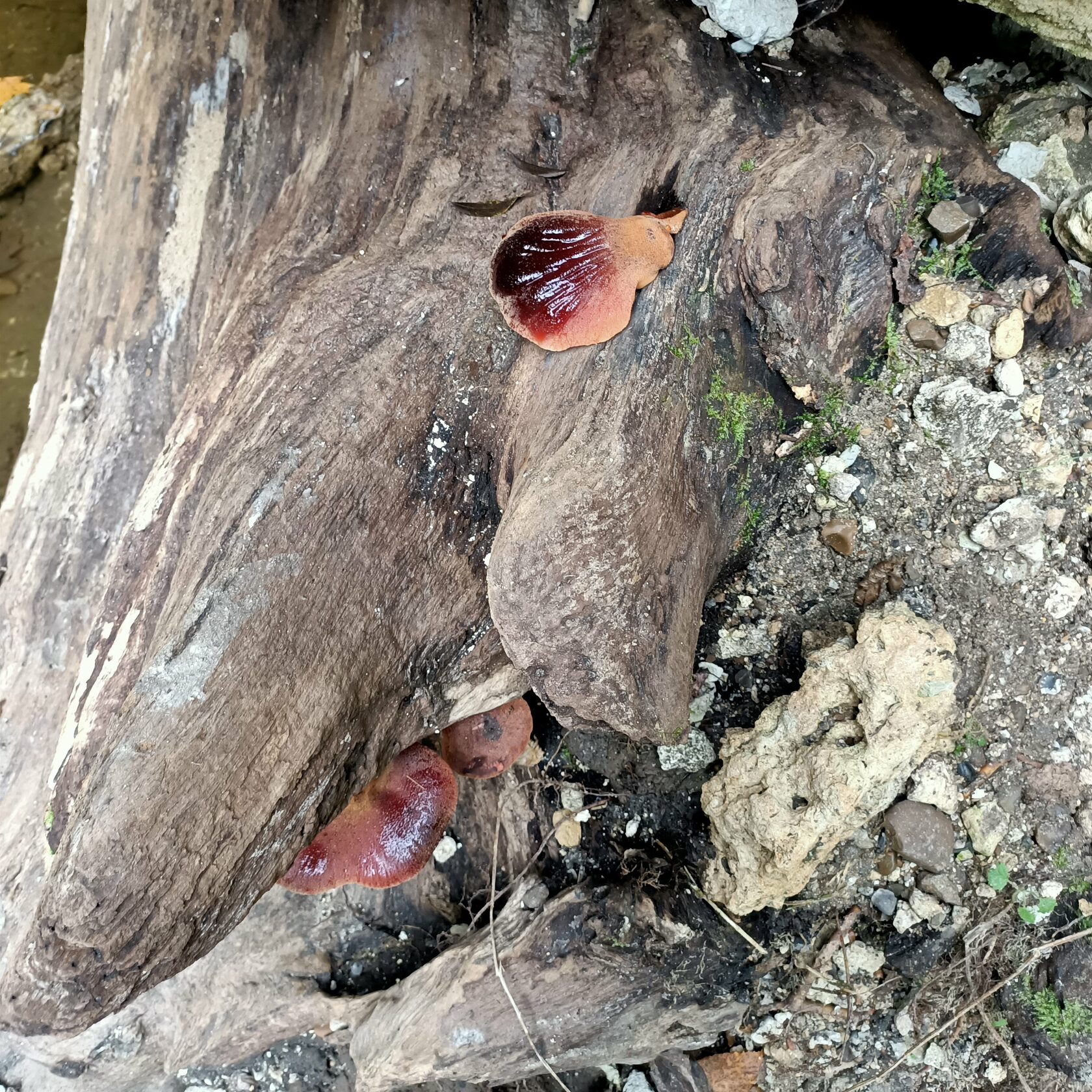
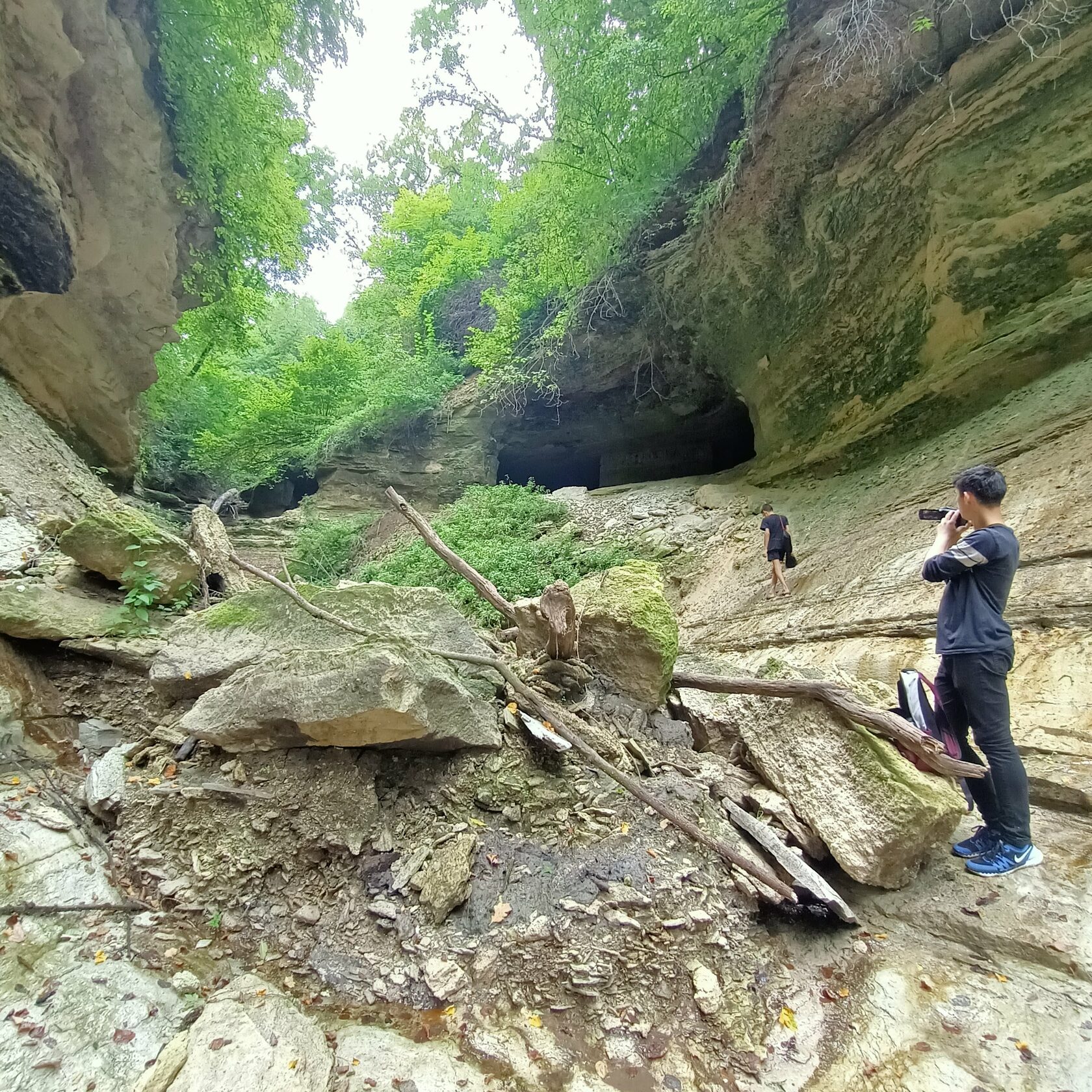
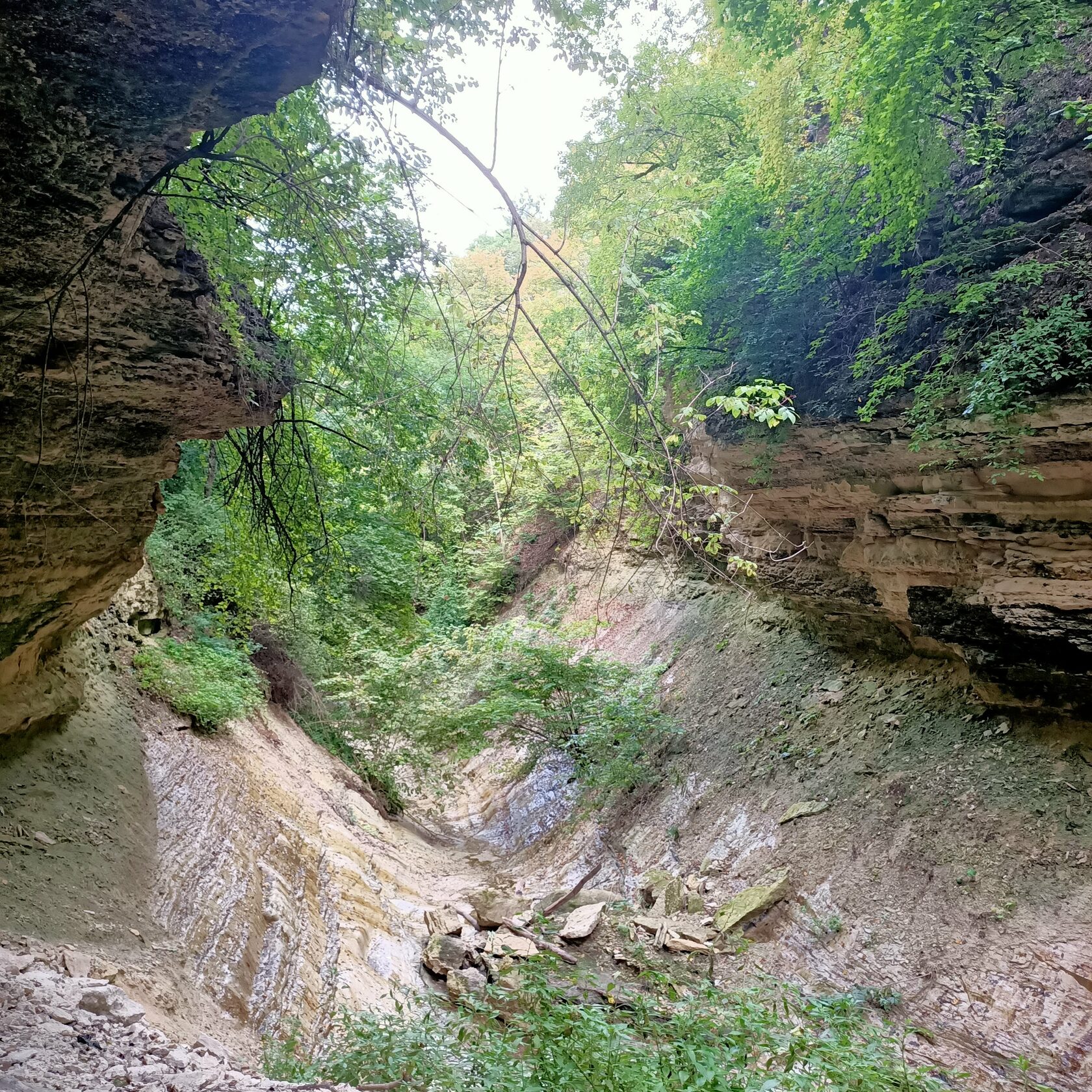
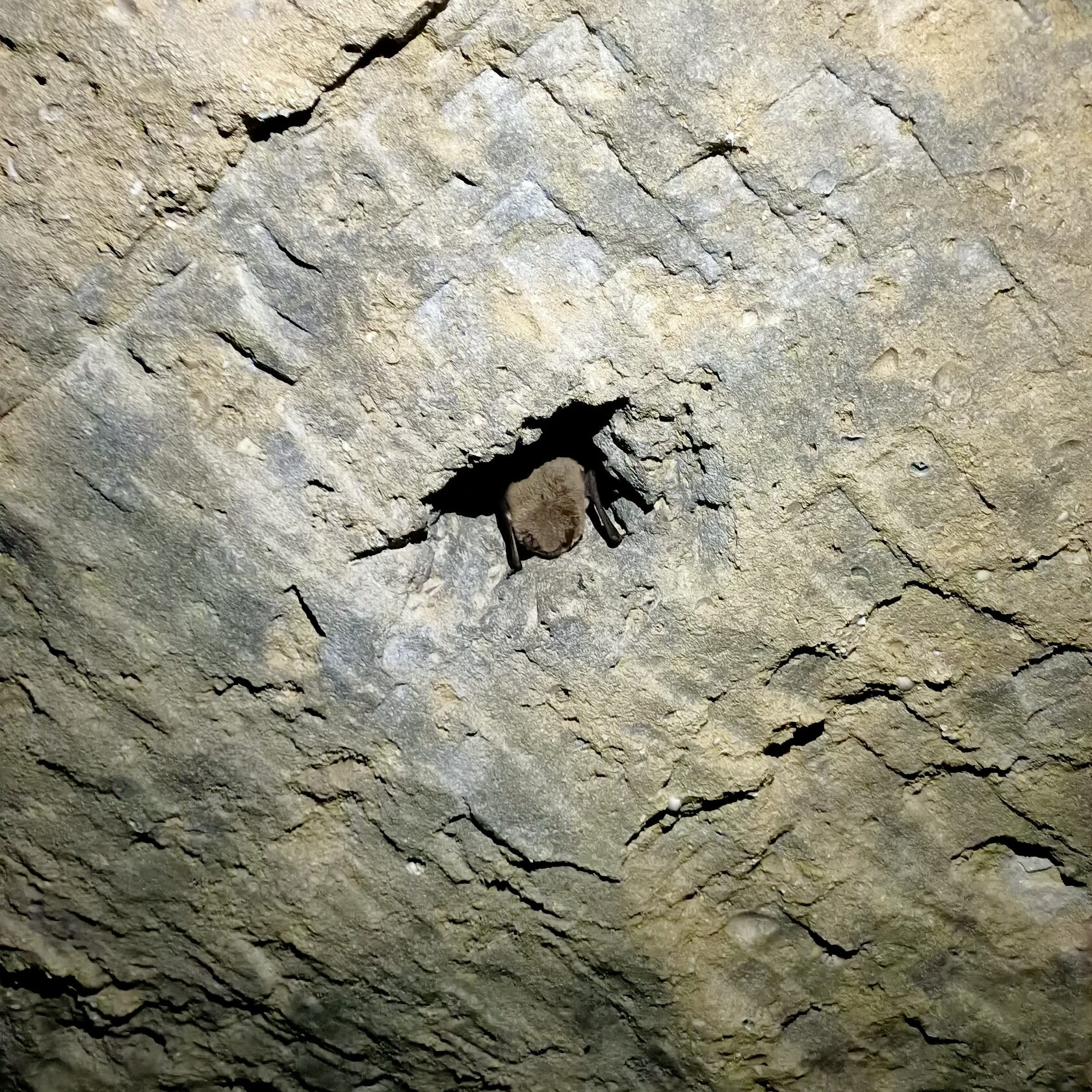
The old couple takes us on the river bank. “If you get on the boat and sail on the river, watching the forest… It’s such a beauty!,” Gheorghe tells us with excitement. He walks slowly and looks towards Nistru, watching the swans, the forest. “The air in Vîșcăuți almost makes you drunk,” he adds. He is followed by his wife Liuda and Daniel, a boy from the neighborhood.
They want to visit the three springs. It is said that the water of each of the springs has distinctive tastes. When they get to the place, they can see tourists’ traces: campfire ash, some pieces of paper. Tourists are not uncommon in these places. Gheorghe tells us that they come with their tents and spend a couple of days here fishing. He likes spending time with them. “All of them say that this is a nice quiet place”.
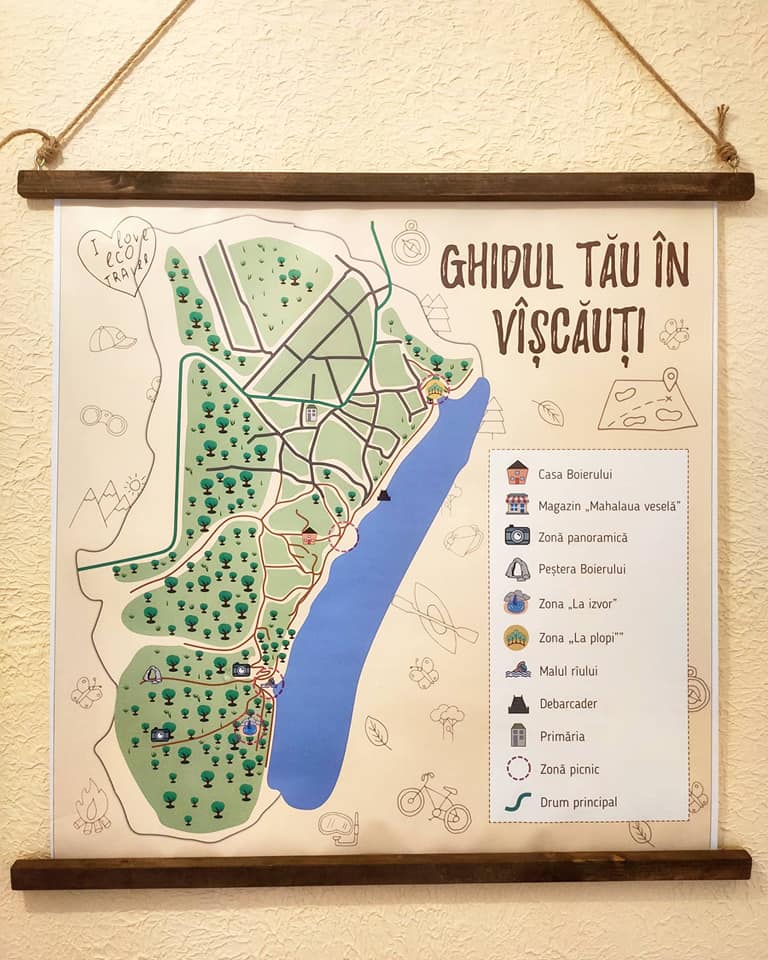
Map drawn for the tourists who visit the Boyar’s House
In Vîșcăuți you can rent a boat from the locals. You can also buy homemade bread, wine and free range chicken, fresh river fish, home grown vegetables. The village also has a beach, a picnic area, a wharf and a neighborhood called “The joyful neighborhood” due to the events organized here. From time to time, people gather here and cook fish soup or barbeque, they play some music, dance and party.
“The hill of Chirița” opens a view of Nistru river and the surrounding areas. “Now everything has dried-up… But when it’s green, the flowers there are wonderful!,” says Gheorghe.
“In Rață’s music video they showed the entire village. They filmed the forest and our meadow”, recalls Gheorghe. “There is also a song – My meadow. He sang it on TV many times,” adds Ludmila.
„Over the mountain, over the river – is my meadow,
Sometimes yearly, sometimes late – I take a walk there,
Over the mountain, over the river – flowers and roses,
Over the mountain, over the river – hidden memories.”
The lyrics to the song “My meadow”, sang by Moldovan singer Ion Rață, born in Vîșcăuți, where the music video was filmed.
Since the pandemic started, Ludmila and Gheorghe appreciate life in the village even more. “When the pandemic started, everyone was so agitated and scared. When we were in Chișinău, we would see all the ambulances and police cars throughout the entire city. But when we came here, it was like coming to heaven. When you get in the yard, you don’t need the mask any longer. We are peaceful here and we see to our chores. In Chișinău we didn’t have anything to do, except sitting on the benches outside. But here we exercise, we grow vegetables, fruits, we make canned food for winter,” Ludmila explains. She appreciates the tourists visiting the village, because the people have the opportunity to sell something to them. “They really don’t have a way to sell something in the village, no means to make a living.”
The luck and the happiness to be born at the river
Because the village is located on the banks of Nistru, the river is the one dictating the life in the region: it gives people water, it gives them food, but also leisure areas. Gheorghe remembers that especially during the soviet period he would visit his relatives on the other side of the river, in the village of Harmațca. They would barbeque under the willows near the river and then cross Nistru and continue their party under the willows of Vîșcăuți.
At the guest house, while stirring the pot roast, Lucia is humming a sad song. She is absorbed by the process and lets herself caught up in the moment:
Nistru, don’t drown me,
Nistru, don’t drown me,
Shai-rai-rai-ra, Shai-rai-rai-ra.
You don’t have the money to burry me,
You don’t have the money to burry me,
Shai-rai-rai-ra, Shai-rai-rai-ra.
“I woke up to this song. I woke up with my grandparents, with my parents, with the entire village singing it, and we learned it.” She grinds some cheese on a plate, and on another she puts some parmesan – so it’ll be tastier with the mămăliga. She puts some clay plates on the table and invites the guests.
“I am very proud to be born near the river,” says Lucia. She has happy memories of her childhood, when the winters were colder and the ice on the river could reach even 1 meter in depth. “Cars and tractors, even trucks with gas tanks would cross Nistru, driving towards the Transnistrian region,” she explains.
1 434 |
1 210 |
People live in VîșcăuțiSources: BNS, 2014 |
People live in HarmațcaSources: dubossary.ru, 2013 |
Even today, the bond between the two river banks is not lost. Lucia has relatives living in the village across the river, in Harmațca. “We have brothers and sisters, we have cousins, we are all related to each other. Because it’s a whole.”
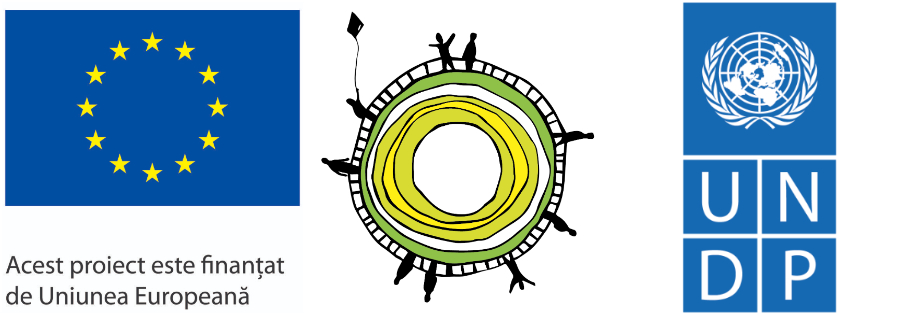
Produced with the financial support of the European Union within the “Support to Confidence Building Measures” project, implemented by UNDP. The opinions expressed in this material do not necessarily reflect the official position of the EU or UNDP.
Economy
Romania and Moldova signed a partnership memorandum pledging to cooperate in promoting their wines
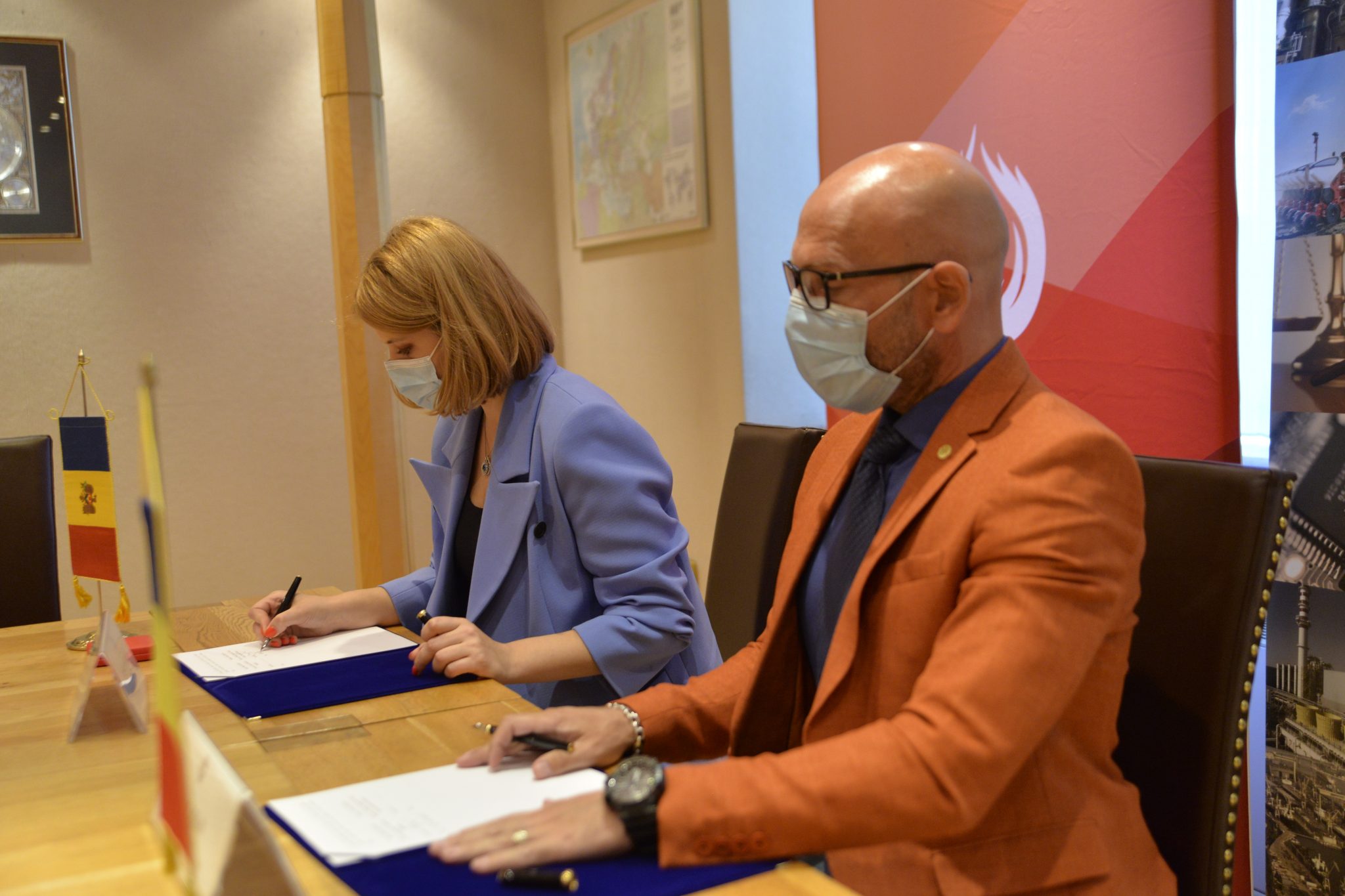
Reading Time: 2 minutesThe Chamber of Commerce and Industry of Romania (CCIR) and the National Office for Vine and Wine (NOVW) of the Republic of Moldova signed, last week, a memorandum of cooperation on organizing joint promotional activities in the markets of common interest, as the CCIR announced.
China, Japan or the USA are just some of the markets targeted by the Romanian and Moldovan institutions. The memorandum also involves advertising activities for wines from common indigenous varieties, promoting the oeno-tourist region, developing a tourist route in the two states, exchange of experience, study visits, and mutual support in identifying new export opportunities. “We are very confident that this collaboration between our organizations will lead to sustainable economic growth and a higher degree of well-being among Moldovans and Romanians,” claimed Deputy Secretary-General of CCIR, Bogdan Visan.
On the other hand, Director of the NOVW, Cristina Frolov, declared that no open competition with Romania is aimed at the governmental level of the Republic of Moldova. “This request for collaboration is a consequence of the partnership principle. Romania imports 10-12% of the wine it consumes, and we want to take more from this import quota. Every year, the Romanian market grows by approximately 2.8%, as it happened in 2020, and we are interested in taking a maximum share of this percentage of imported wines without entering into direct competition with the Romanian producer,” the Moldovan official said. She also mentioned that Moldova aims at increasing the market share of wine production by at least 50% compared to 2020, and the number of producers present on the Romanian market – by at least 40%.
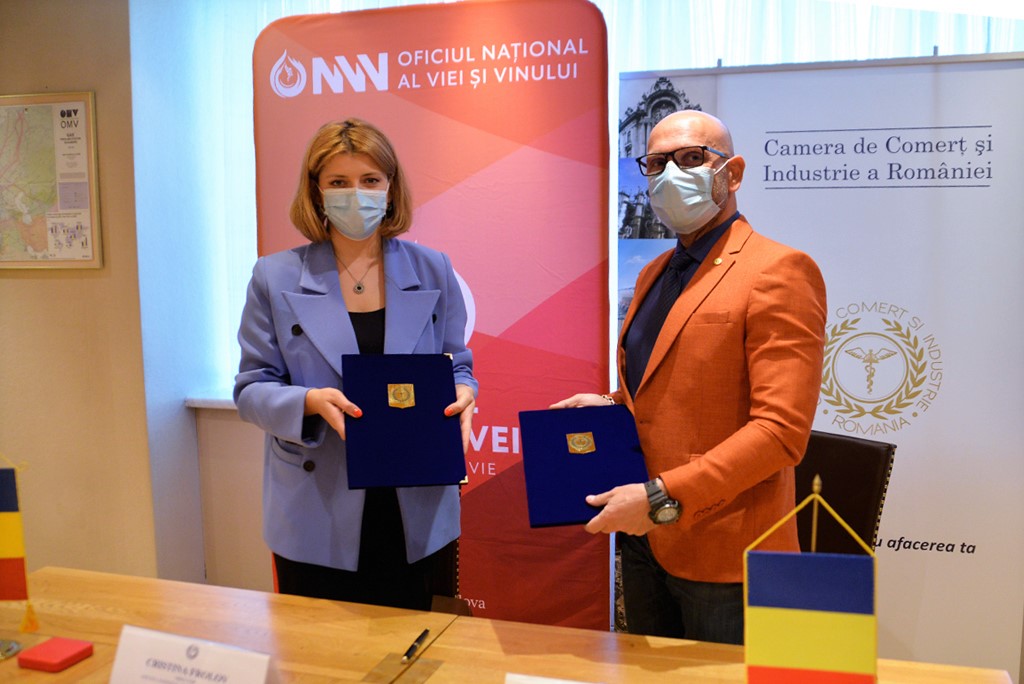
Source: ccir.ro
**
According to the data of the Romanian National Trade Register Office, the total value of Romania-Moldova trade was 1.7 billion euros at the end of last year and over 805 million euros at the end of May 2021. In July 2021, there were 6 522 companies from the Republic of Moldova in Romania, with a total capital value of 45.9 million euros.
The data of Moldova’s National Office of Vine and Wine showed that, in the first 7 months of 2021, the total quantity of bottled wine was about 27 million litres (registering an increase of 10% as compared to the same period last year), with a value of more than one billion lei, which is 32% more than the same period last year. Moldovan wines were awarded 956 medals at 32 international competitions in 2020.
Photo: ccir.ro



